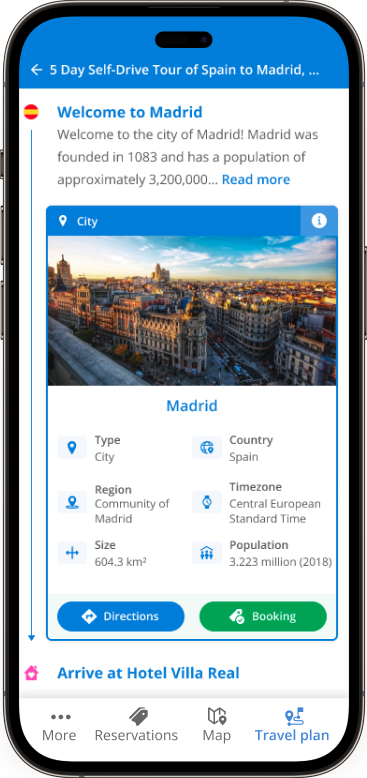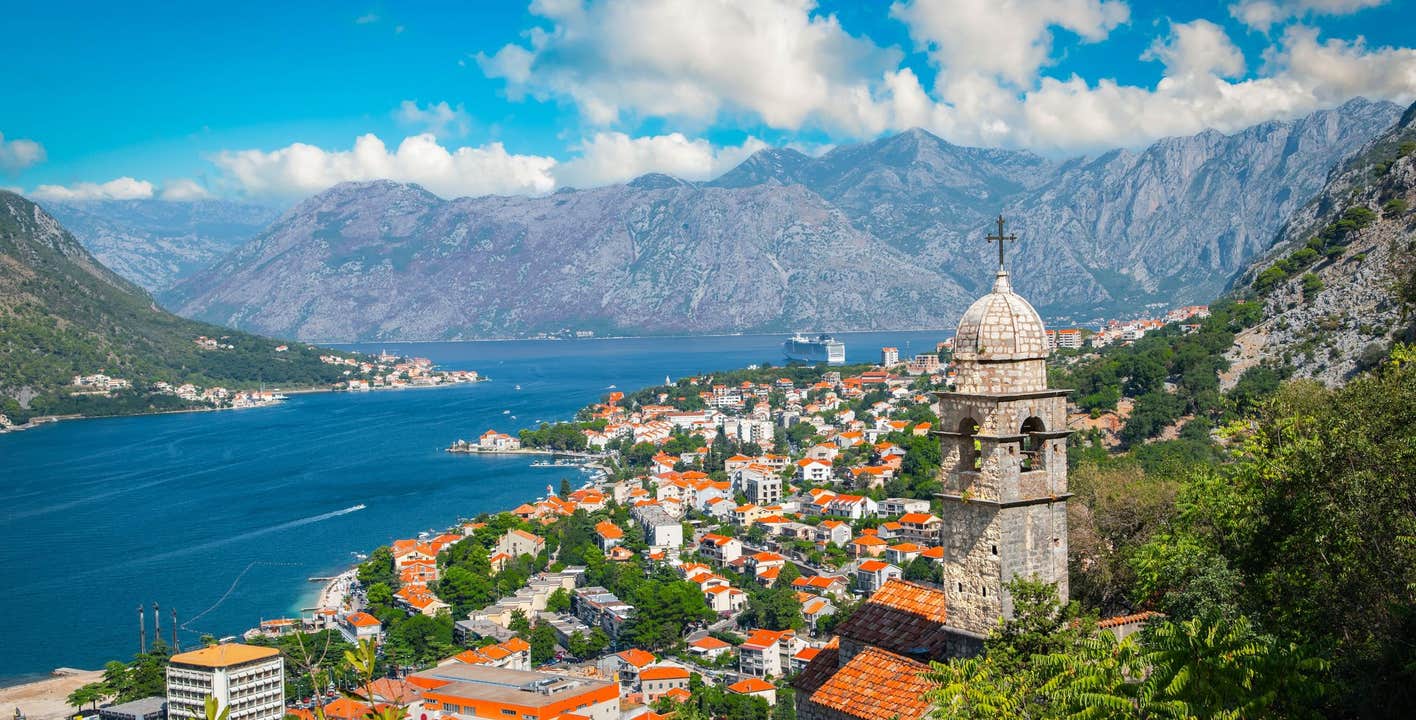
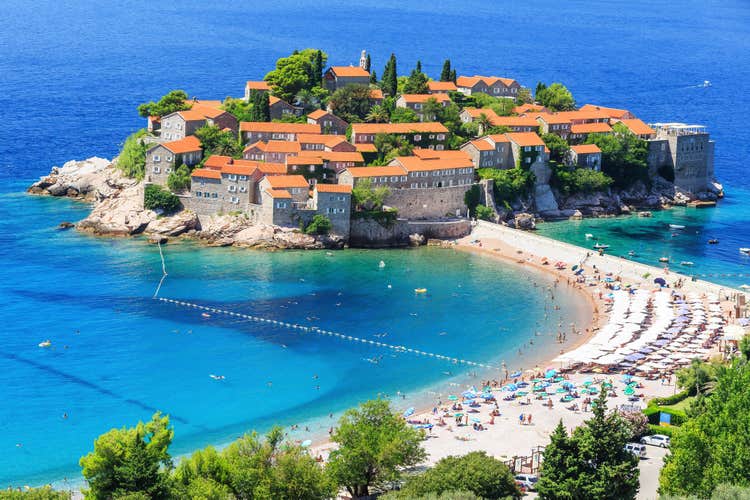
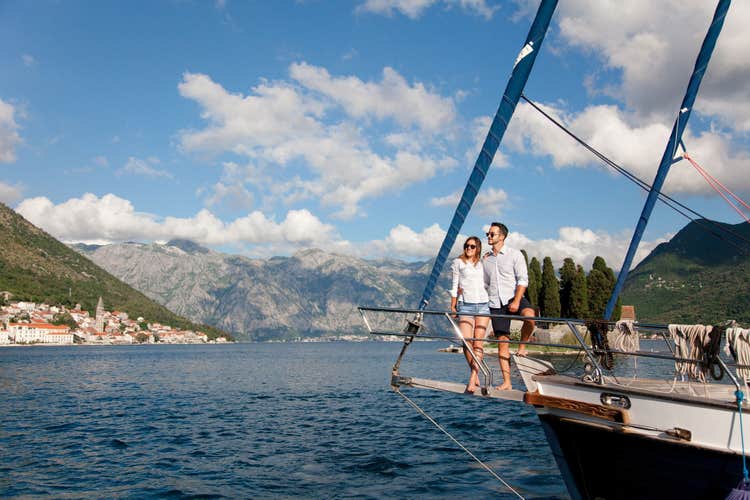
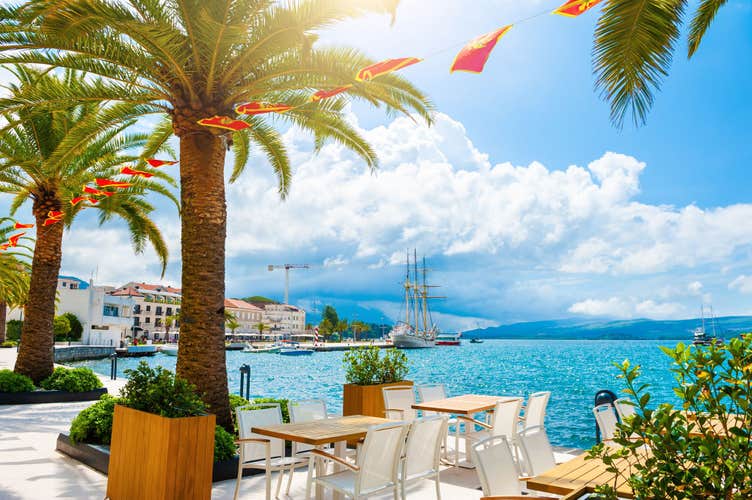
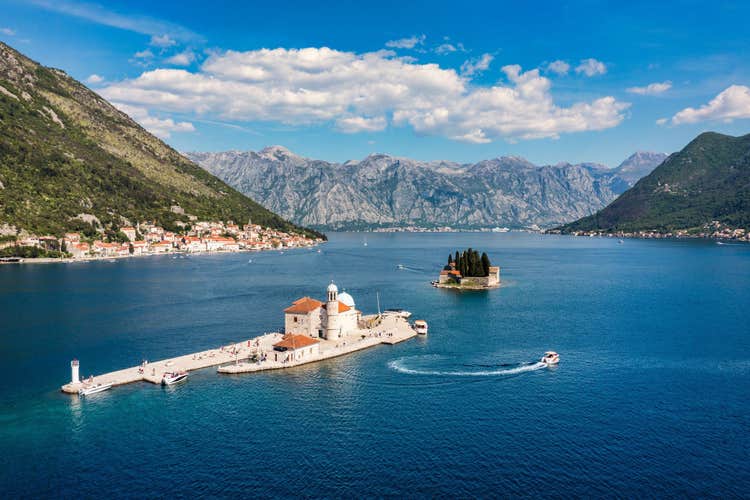
Find the best time to visit Montenegro and explore its hidden gems, from the stunning Bay of Kotor to the dramatic peaks of Durmitor National Park. Learn when to experience its breathtaking landscapes, thriving culture, charming coastal towns, and perfect Mediterranean weather.
Montenegro boasts a breathtaking landscape of rugged mountains and shimmering blue waters, making it a must-visit destination. This country offers a unique mix of natural beauty and rich history, from its picturesque Adriatic coastline to ancient towns like Kotor and Budva.
With the biggest selection of perfectly planned holiday packages in Montenegro, enjoying the country’s seasonal charms has never been easier. From beach vacations in Ulcinj to weekend getaways in Budva, there's so much to see and experience in Montenegro.
As you journey to discover this Balkan gem, a basic question pops up: what is the best time to visit Montenegro? Deciding when to go ensures you can fully enjoy top-rated tours and experiences in Montenegro, from guided walks in Podgorica to sailing tours in Kotor.
Choosing the best time to visit Montenegro is key to experiencing its rich culture, stunning landscapes, and seasonal highlights at their absolute best. In this guide, navigate the seasons and unveil the ideal time to experience Montenegro's breathtaking beauty and lively culture.
Why Plan the Best Time To Visit Montenegro
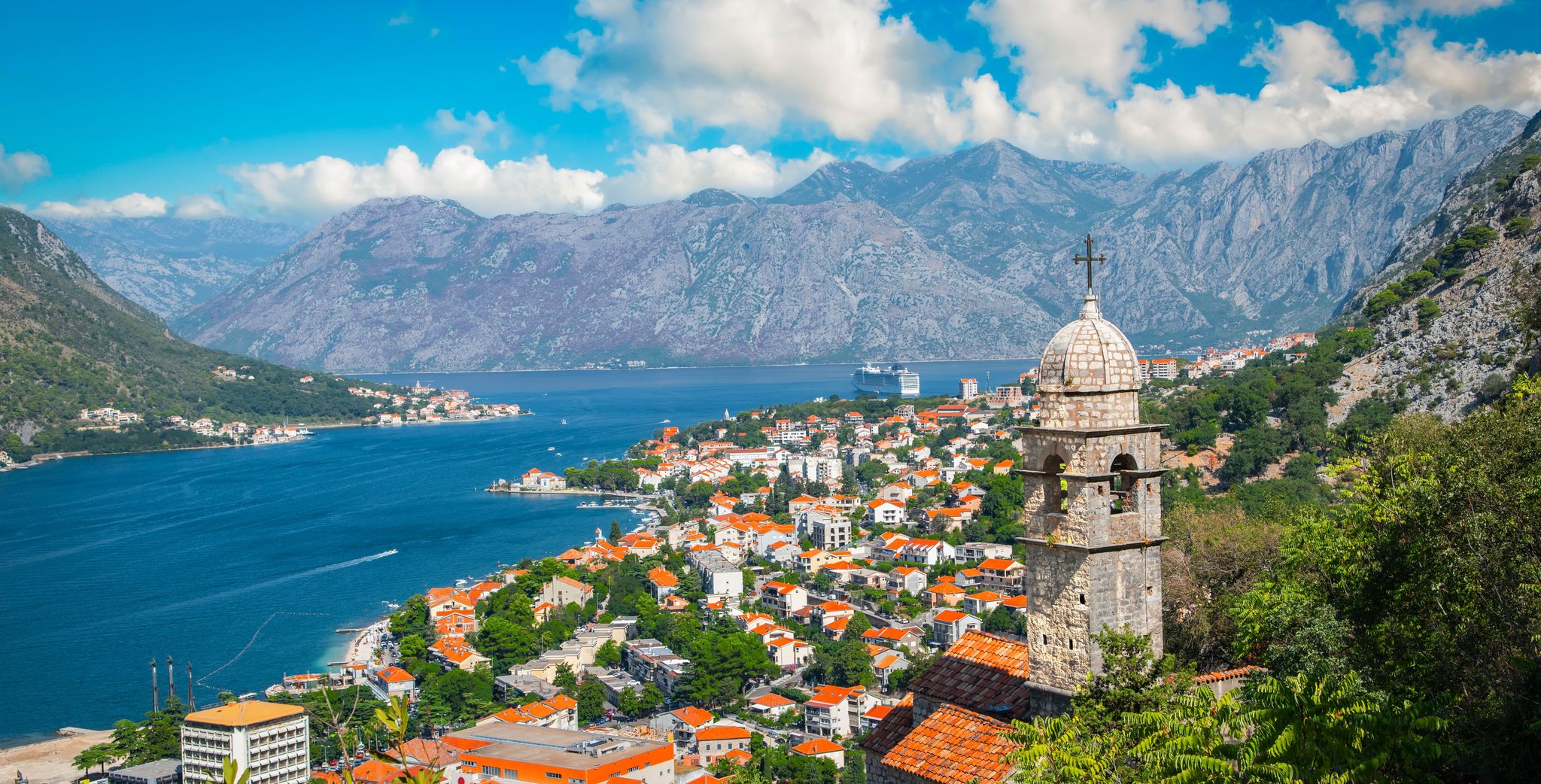
Montenegro is home to natural wonders, architectural marvels, and lively events. It offers unique experiences throughout the year, making it a versatile destination. Planning the best time to visit Montenegro lets you experience the country at its finest.
Think about enjoying the Adriatic coast with warm weather in the summer, perfect for swimming and relaxing on the beach. Meanwhile, spring and fall offer cooler temperatures. They’re ideal for hiking in places like Durmitor National Park or exploring Montenegro’s charming old towns without the summer crowds.
Finding the best time to visit Montenegro also ensures you don't miss out on its highlights. If you visit in the off-season without planning, you might encounter cooler weather that’s not ideal for swimming or find that some coastal towns are quieter. Without proper timing, you could also miss key festivals like Kotor's Carnival or the Lake Fest music festival.
So, before packing your bags, plan your trip around the best time to visit Montenegro. Knowing when to go helps you avoid missing out on activities and makes your holidays even more memorable.
Peak Season in Montenegro: Summer (June, July, August)
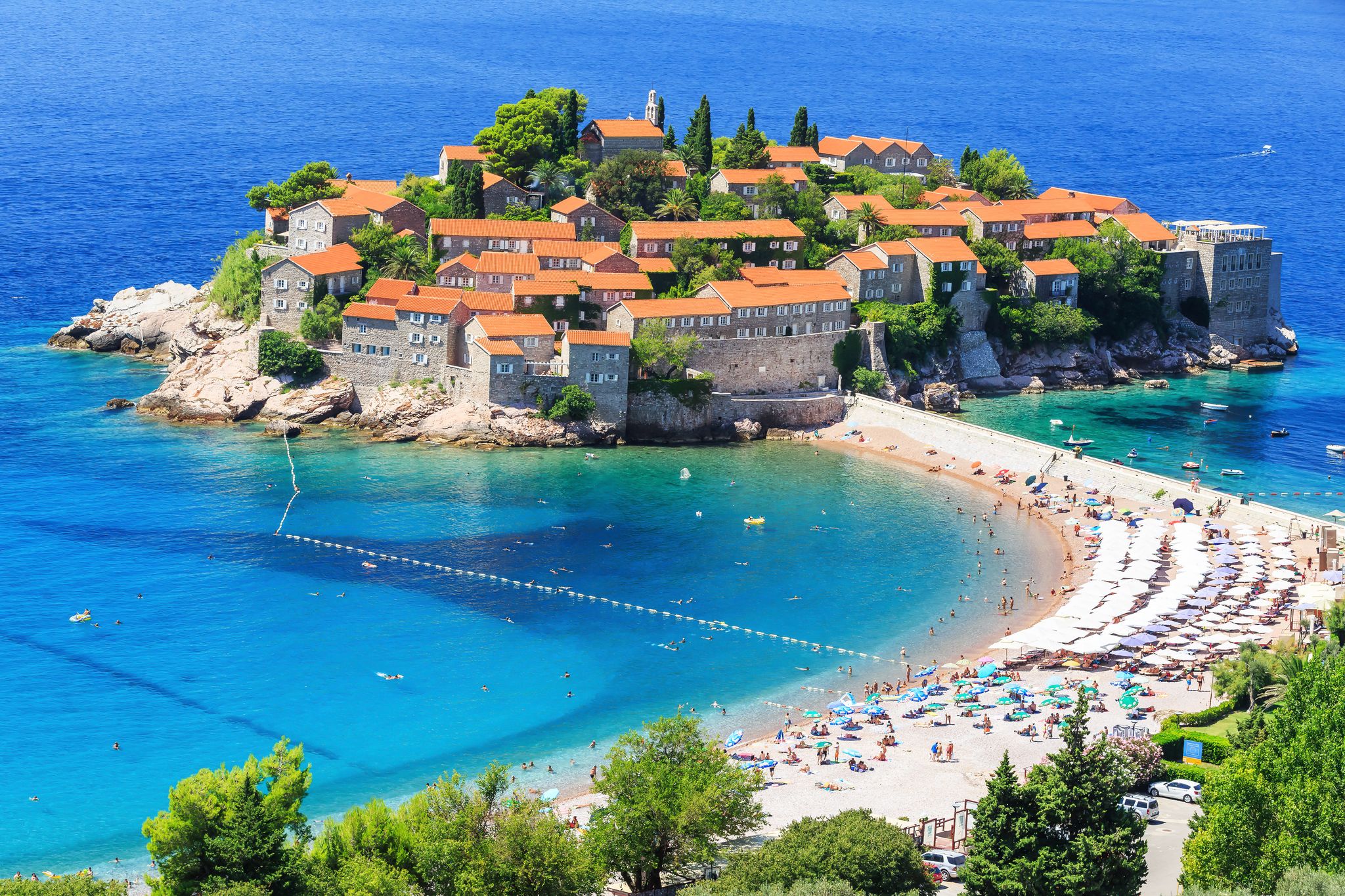
The summer season tempts travelers with Montenegro’s Mediterranean climate, inviting coastline, and plenty of cultural and outdoor activities. Summer’s warm months make it an ideal season for unforgettable luxury holidays in Montenegro.
The Adriatic Sea draws visitors for refreshing beach vacations in Montenegro’s crystal-clear waters. The country’s summer calendar also brims with festivals, events, and cultural celebrations. The lively atmosphere and abundance of activities make summer an irresistible time to book flights to Montenegro for an exciting Balkan adventure.
Top Summer Activities in Montenegro
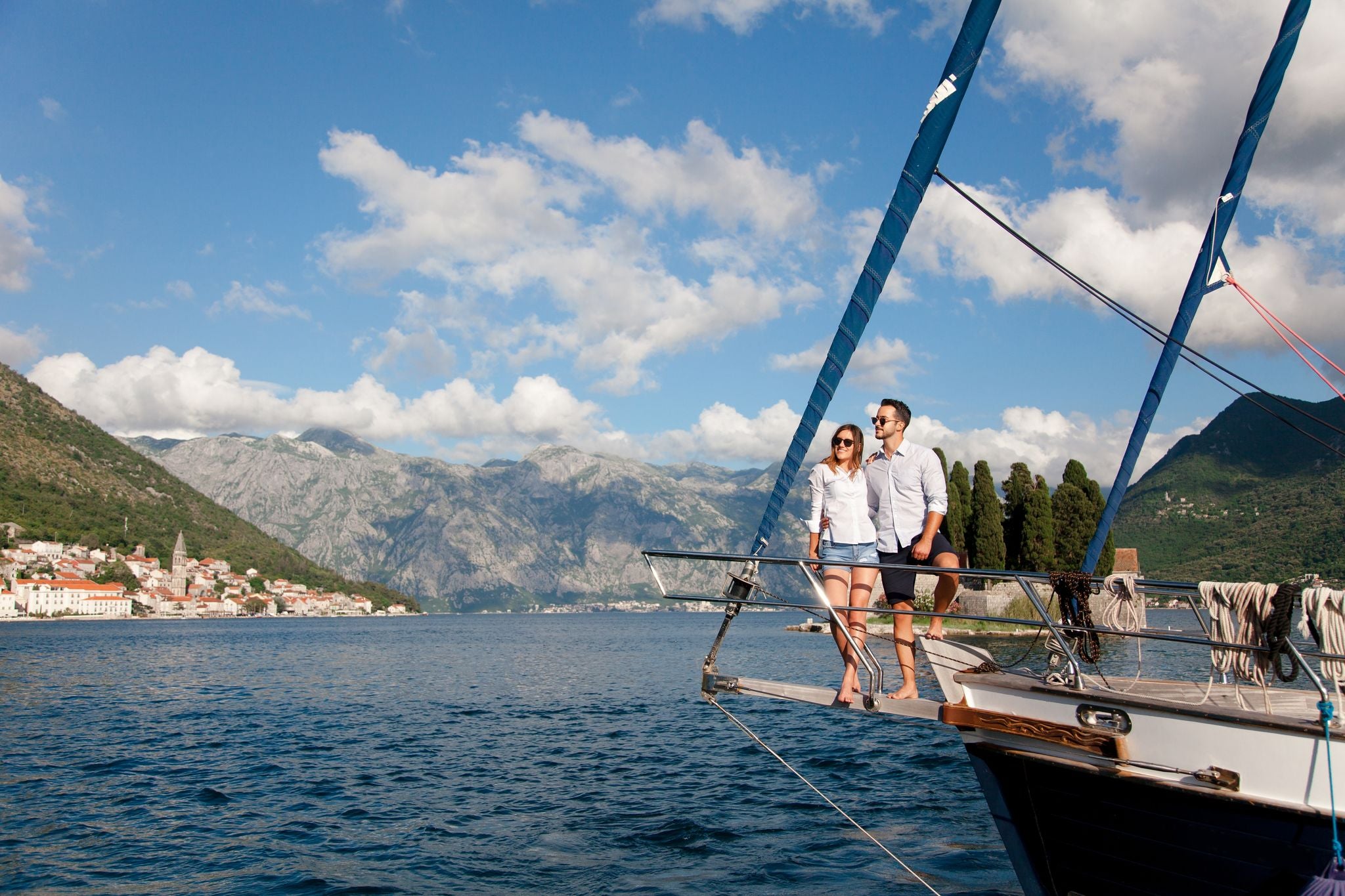
Witness the energetic charm of Montenegro during the peak summer season. Here are the most popular activities to enjoy in Montenegro when the weather is warm and the days are long:
1. Explore the coastline
Summer is the best time to visit Montenegro for swimming in pristine beaches and snorkeling in crystal-clear waters. Montenegro boasts iconic spots like Sveti Stefan, Budva's Riviera, and the secluded beaches of the Lustica Peninsula. The country’s stunning Adriatic coastline offers endless opportunities for seaside adventures.
2. Visit the Bay of Kotor
Explore the breathtaking Bay of Kotor, often called “Europe's southernmost fjord.” Wander through the charming old towns of Kotor, Perast, and Herceg Novi and marvel at their medieval architecture and picturesque scenery.
To make your experience unique, you can take a boat tour to the famous Our Lady of the Rocks islet and Blue Cave. Another way is through a speedboat sightseeing tour in Kotor Bay that allows you to soak in its panoramic views.
3. Hike in Montenegro’s rugged mountains
The best time to visit Montenegro for hiking and exploring the outdoors is summer. You can explore the rugged beauty of Durmitor National Park on an exciting day tour. Trek through pristine forests, marvel at glacial lakes like the iconic Black Lake, and challenge yourself with hikes to peaks like Bobotov Kuk.
4. Explore medieval monasteries
Delve into Montenegro's spiritual heritage by visiting its historic monasteries and churches. A private tour of Ostrog Monastery will allow you to explore its miraculous architecture. Discover the Moraca Monastery's medieval treasures or the Rezevici Monastery's peaceful atmosphere, nestled amidst olive groves near Petrovac.
5. Try adventure activities
Get your adrenaline pumping with a variety of outdoor adventures in Montenegro. Go whitewater rafting on the Tara River, Europe's deepest canyon, or zip-line across the breathtaking landscapes of the Bay of Kotor. For thrill-seekers, summer is the best time to visit Montenegro for canyoning, paragliding, and other exhilarating adventures.
6. Sail the Adriatic
Set sail on the crystal-clear waters of the Adriatic Sea. Discover hidden coves, secluded beaches, and charming coastal villages. Whether you want a private luxury sunset tour to Our Lady of the Rocks and Perast or a guided boat experience of Kotor Bay, sailing tours in Montenegro offer an unforgettable adventure.
Additionally, the clear blue waters of Montenegro offer excellent visibility and opportunities to explore marine life and underwater caves. Enjoy a variety of water sports, including snorkeling, diving, kayaking, and paddleboarding.
7. Attend summer festivals
Experience the country’s thriving cultural scene during summer by attending festivals and joining cultural tours in Montenegro. For example, the Sea Dance Festival is perfect for music enthusiasts, whereas the traditional Kotor Carnival features colorful parades and masked performers. These events make summer the best time to visit Montenegro to experience its music, art, and local cuisine.
8. Experience “old towns”
Immerse yourself in the rich history and culture of destinations like Kotor, Budva, Perast, and Tivat. Wander through cobblestone streets lined with centuries-old buildings on a walking tour of Kotor Old Town. Explore ancient fortresses and learn their history while taking a private tour of Perast.
Don't miss the chance to stroll along medieval city walls, visit iconic landmarks, and soak up the Mediterranean atmosphere. From bustling markets to charming cafes, these old towns come alive with bustling energy and offer a glimpse into Montenegro's fascinating past.
Advantages of Visiting Montenegro in Summer
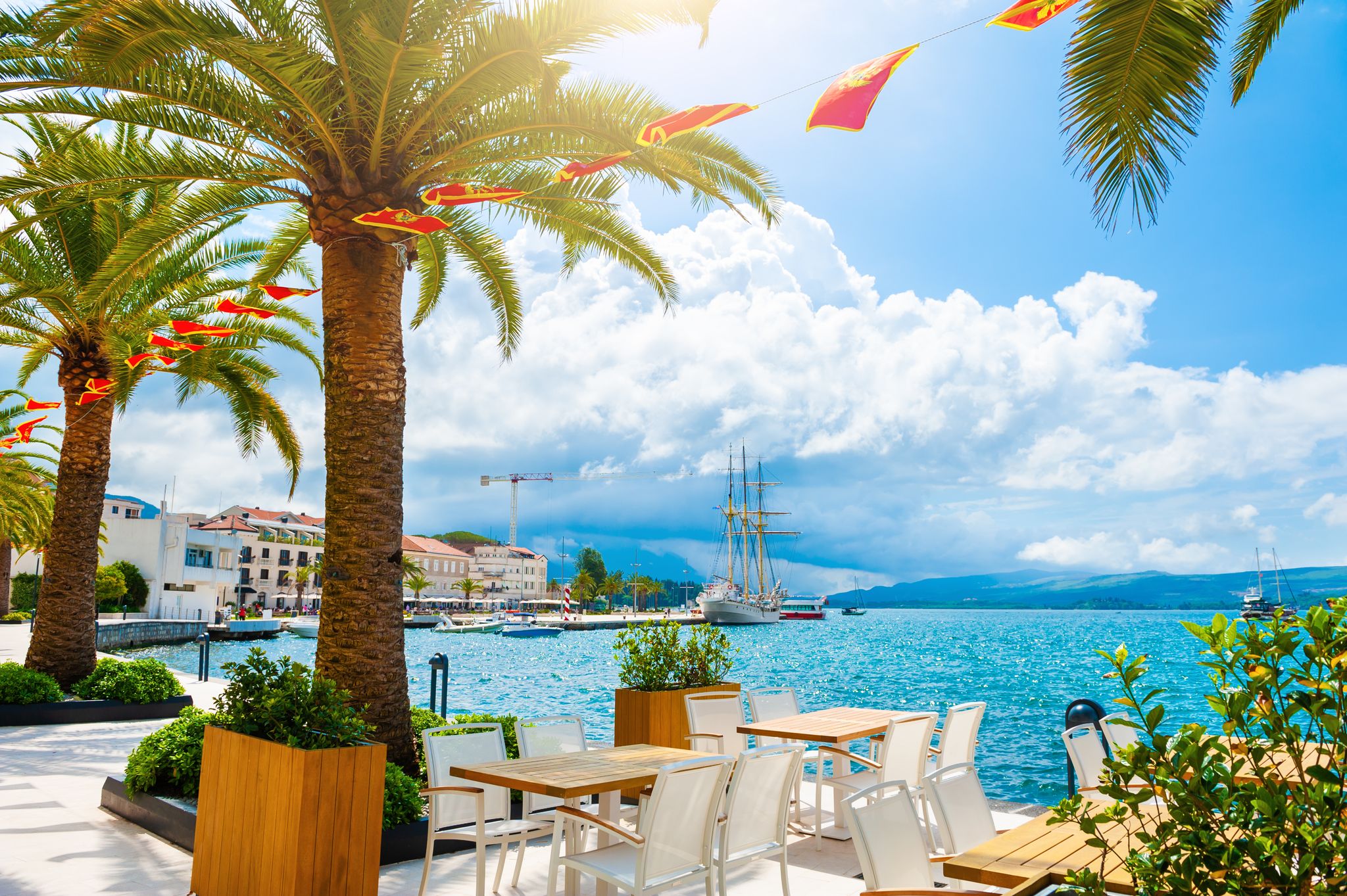
Visiting Montenegro in the summer offers a wealth of benefits for travelers, including:
1. Warm and sunny weather
Montenegro basks in glorious sunshine during summer. It’s the best time to visit Montenegro for sunbathing, swimming, and water activities along the picturesque Montenegrin coastline. The Mediterranean climate ensures long, balmy days, perfect for seaside adventures and scenic hikes through the lush countryside.
2. Lively atmosphere and plenty of amenities
From bustling coastal towns to quaint mountain villages, Montenegro comes alive with energy and excitement during the peak summer season. Restaurants, bars, and shops buzz with activity. This creates a bustling ambiance that enhances the holiday experience.
3. Plenty of festivals and events
Montenegro in summer is synonymous with a calendar full of cultural events and festivities. Music lovers can dance the night away at internationally renowned festivals like the Sea Dance Festival.
Meanwhile, theater enthusiasts can enjoy open-air performances and concerts at the Budva Summer Festival. These celebrations offer a unique opportunity to connect with local traditions, making summer the best time to visit Montenegro for culture enthusiasts.
Downsides of Visiting Montenegro in Summer
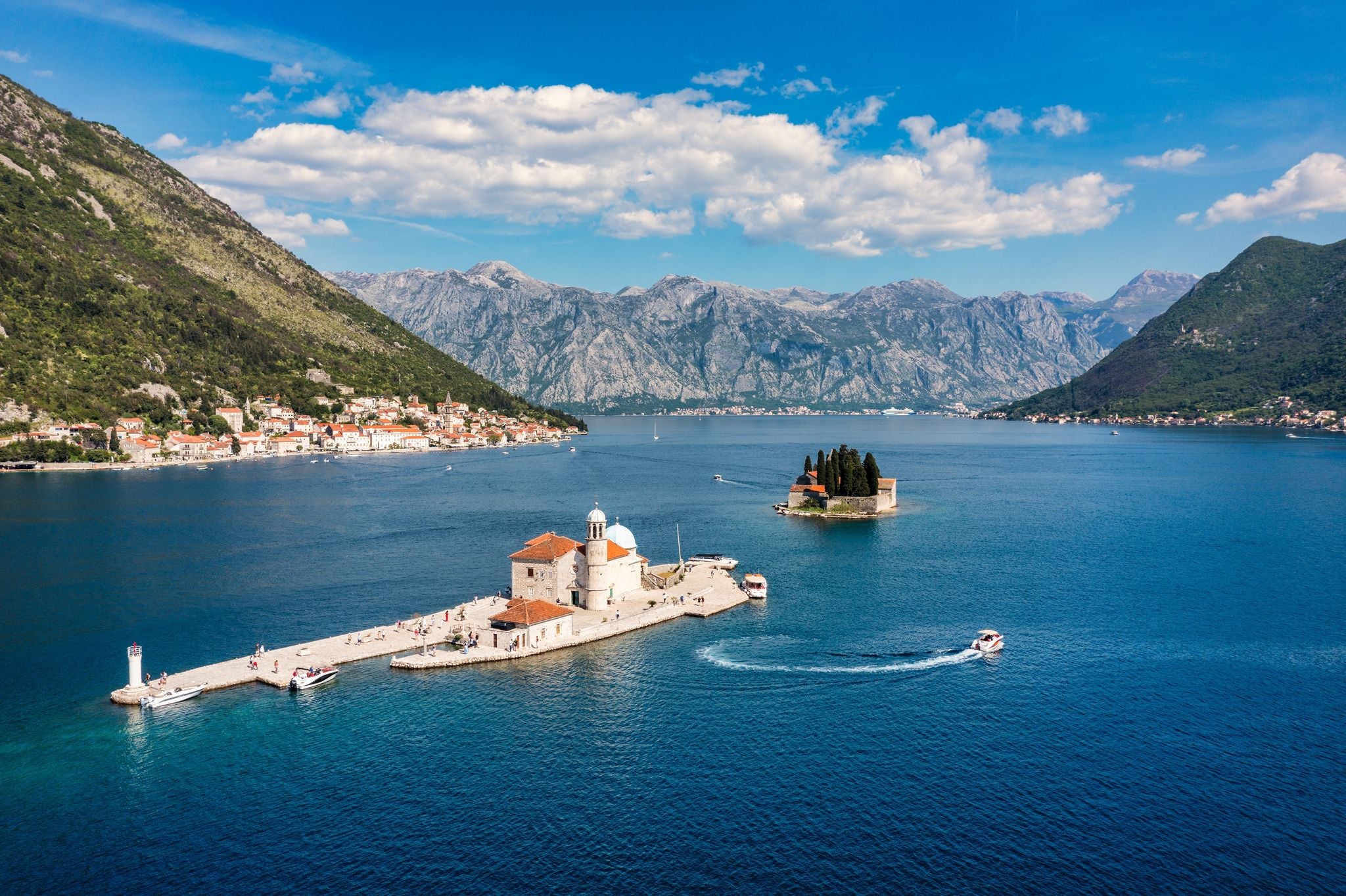
While summer is a popular time to visit Montenegro, it does come with some drawbacks. It's important to consider these factors when planning your trip to ensure you have the best experience possible.
1. Crowds and higher prices
In peak season, Montenegro gets really busy with lots of visitors, making beaches, restaurants, and attractions crowded. This also means that hotels and places to stay in Montenegro can cost more.
Famous spots might also be crowded with tour groups. Popular destinations may be more commercialized and less authentic during this time. Travelers seeking a quieter, more authentic experience may find it challenging to escape the crowds during this time.
2. Limited availability of accommodations and rental cars
With demand at its peak, securing accommodation and rental cars in Montenegro can be challenging during summer. Popular hotels and vacation rentals often book up months in advance, leaving latecomers scrambling for alternatives. Similarly, rental car availability may be scarce, particularly for last-minute reservations.
Shoulder Seasons in Montenegro: Spring and Autumn
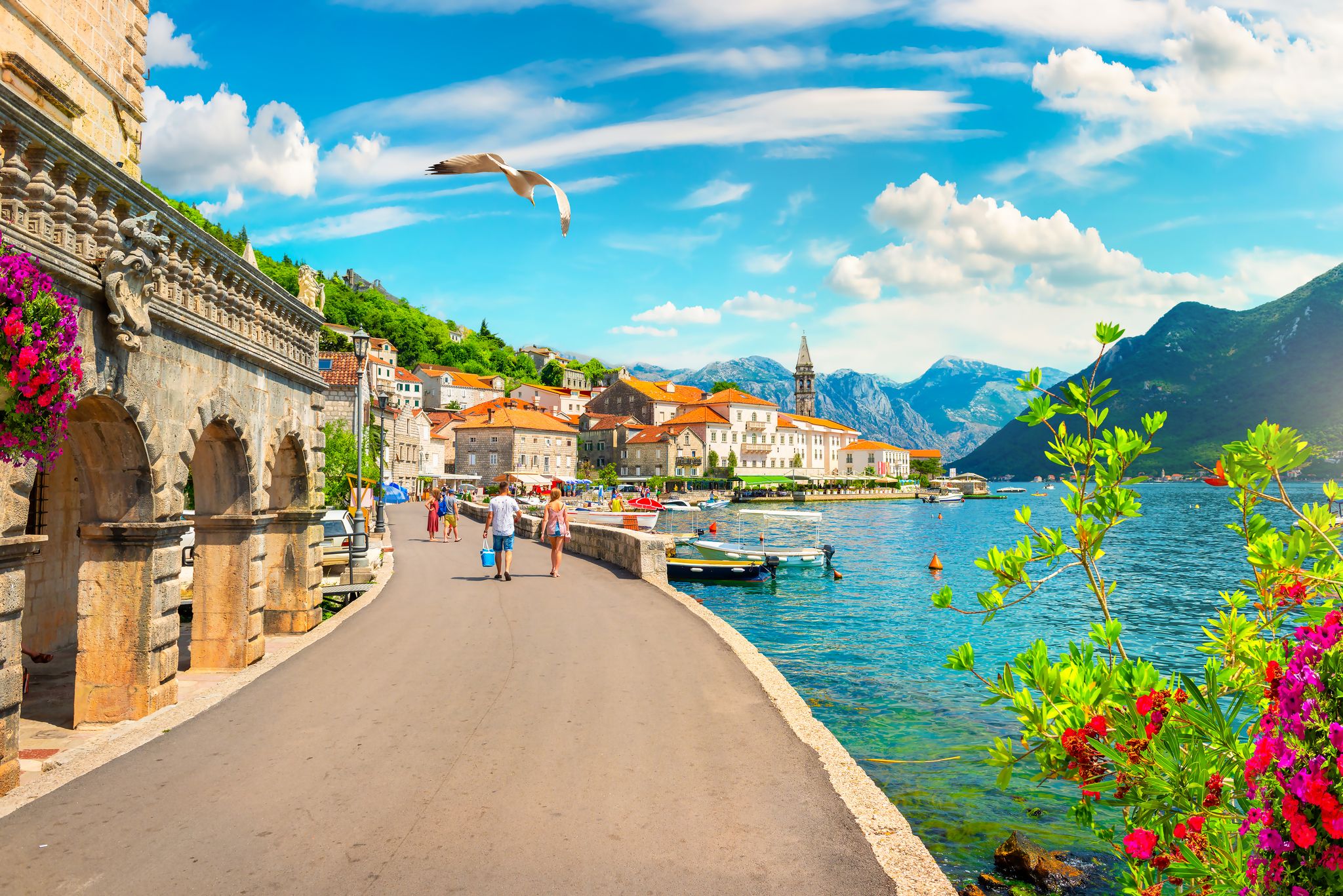
The country’s shoulder season perfectly balances favorable weather, affordability, and tranquility. Spring, from April to early June, and autumn, from September to October, offer an ideal opportunity to explore Montenegro at your own pace. The shoulder months are also the best months to visit Montenegro for peaceful retreats, uncrowded outdoor adventures, and cultural immersion.
Top Activities in Montenegro in Spring or Autumn
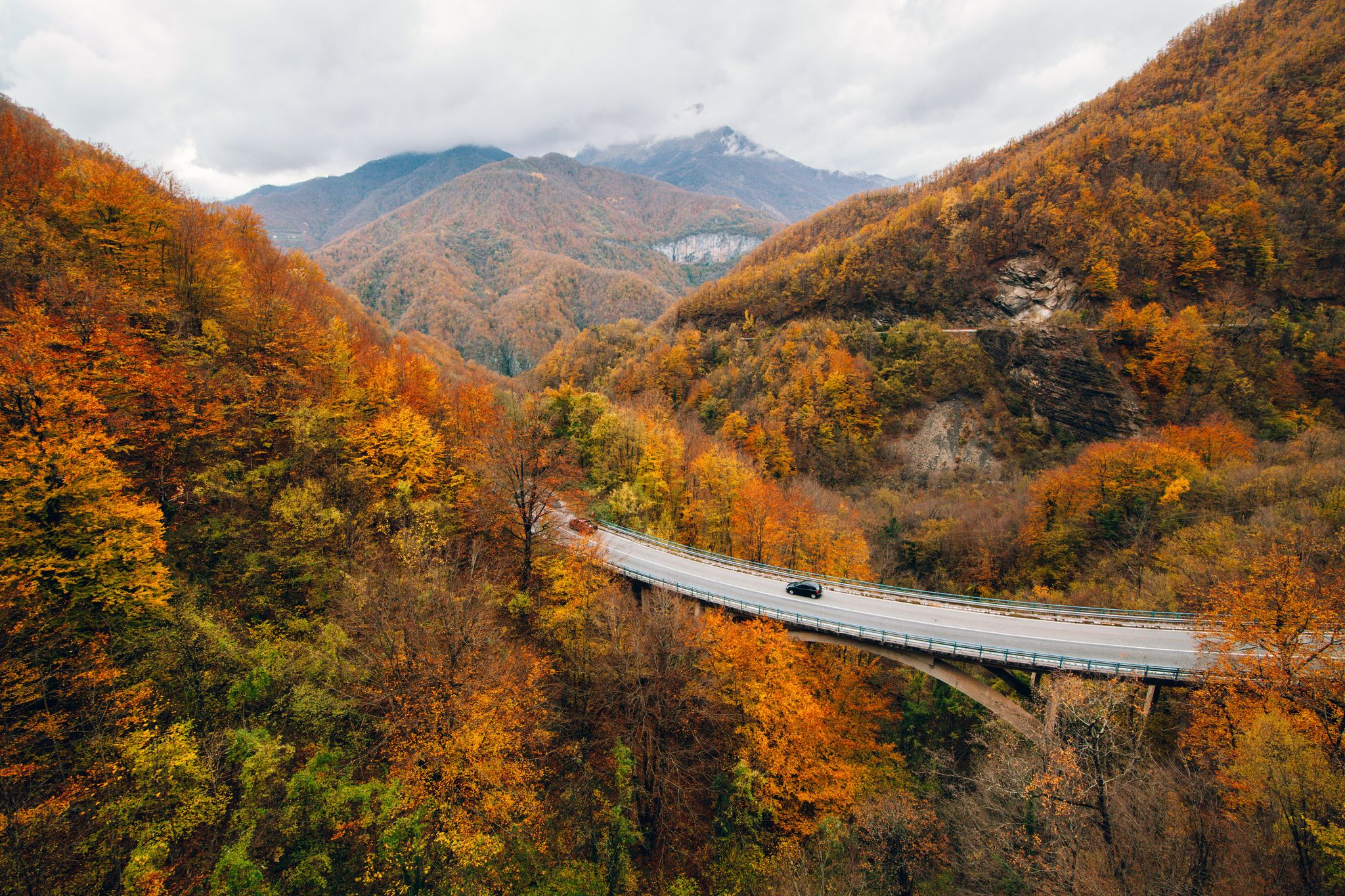
Discover the magic of Montenegro beyond the peak summer crowds. Here are the top activities to enjoy in Montenegro during the shoulder seasons of spring and autumn:
1. Go on scenic drives
The shoulder seasons are the best time to visit Montenegro for leisurely drives through stunning landscapes. Go on exciting road trips in Montenegro and explore winding mountain roads, picturesque coastal routes, and charming countryside villages. Stop at scenic viewpoints to admire panoramic views of the Adriatic Sea, lush valleys, and towering peaks.
2. Cultural sightseeing
Soak in the country's rich history and culture by visiting its historic towns and joining informative cultural tours in Montenegro. Explore medieval fortresses, Ottoman-era mosques, and Roman ruins throughout the country. Wander through cobblestone streets, browse local markets, and sample traditional cuisine at family-owned restaurants.
3. Photography expeditions
Capture the beauty of Montenegro's changing landscapes during the shoulder seasons. Spring or autumn is the best time to visit Montenegro for newbies and professional photographers. Travelers will find endless opportunities to snap stunning shots of blooming wildflowers, colorful foliage, and dramatic mountain scenery.
4. Nature walks and birdwatching
Take leisurely walks in nature and go birdwatching to explore Montenegro's varied ecosystems and wildlife. Discover lush forests, winding rivers, and wetlands filled with birds and other wildlife. Spot endemic bird species like the Dalmatian pelican and the Eurasian eagle-owl in their natural habitats.
5. Wellness retreats
Indulge in relaxation and rejuvenation at Montenegro's wellness retreats and spa resorts. Treat yourself to massages, yoga sessions, and holistic wellness treatments amidst tranquil surroundings. After a day of exploration, visitors can unwind in thermal pools, saunas, and steam rooms while soaking in panoramic mountains or sea views.
6. Adventure sports
For thrill-seekers, spring or autumn is the best time to visit Montenegro for adrenaline-pumping activities without the summer crowd. Try rock climbing, mountain biking, or paragliding above the coastal cliffs. Visitors can also join a tour of North Montenegro from Podgorica and go hiking at Durmitor National Park or zip-lining over the Tara River Canyon.
Advantages of Visiting Montenegro in Spring or Autumn
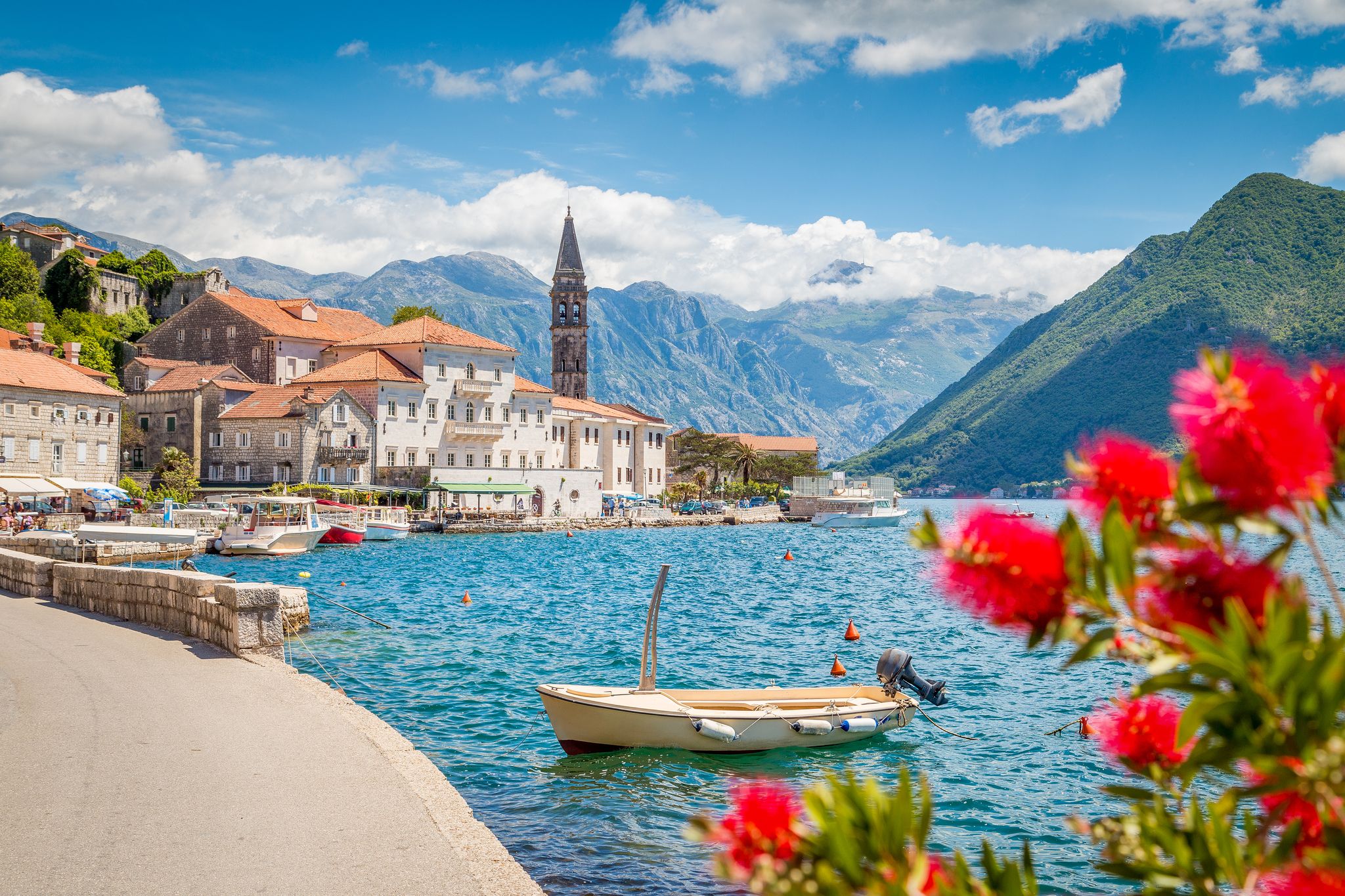
Traveling to Montenegro during the shoulder seasons of spring (April to May) and early autumn (September to October) offers numerous benefits. Here are the top reasons these seasons are the perfect time to explore Montenegro's natural beauty, cultural sites, and outdoor activities:
1. Comfortable weather for outdoor activities
The weather from April to early June and September to early November is typically mild and comfortable. These are the best months to visit Montenegro for outdoor adventures. The pleasant temperatures and clear skies are ideal for hiking, biking, or sightseeing.
2. Fewer crowds and more affordable accommodations
You can enjoy Montenegro's top attractions without the hustle and bustle during the shoulder season. Encounter fewer visitors and shorter queues at popular sites during off-peak months.
Travelers can enjoy a more peaceful and intimate experience as they explore scenic landscapes and historical landmarks. Plus, with reduced demand, attractions, hotels, and places to stay in Montenegro often offer more affordable rates!
3. Scenic views of blooming or changing foliage
From May to June, witness the bright colors of blooming flowers and blossoming trees. Nature enthusiasts will enjoy spring or fall, the best time to visit Montenegro for its breathtaking transformations. Similarly, September to October showcases changing foliage, adorning forests in hues of red, orange, and gold.
Downsides of Visiting Montenegro in Spring or Autumn
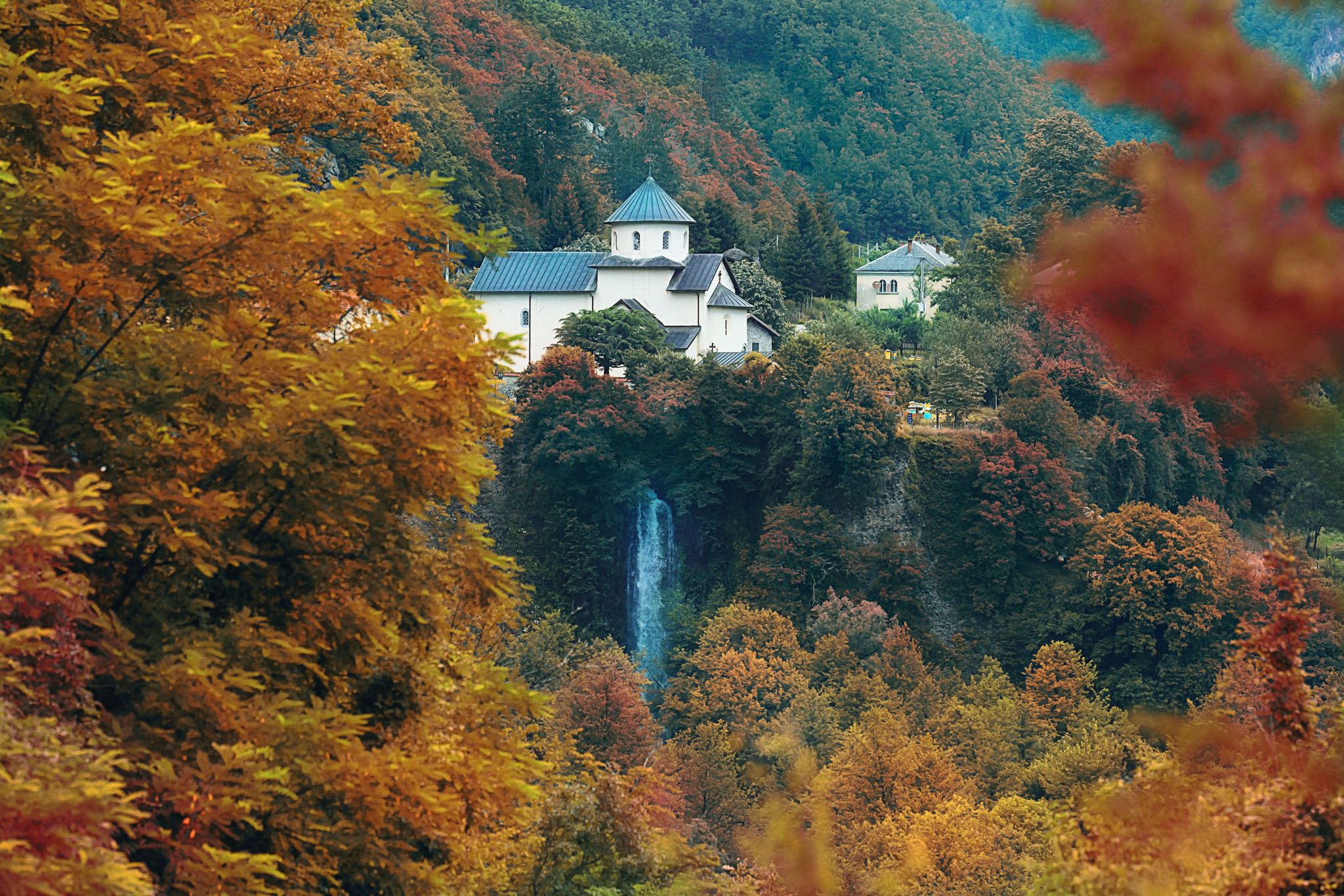
The shoulder seasons offer many benefits, but there are a few disadvantages to consider when planning your trip to Montenegro during this period:
1. Unpredictable weather and occasional rain
The shoulder seasons typically boast pleasant weather, but occasional rain showers or cooler temperatures may still occur. Packing accordingly and preparing for changing conditions is essential, especially if you plan outdoor activities or sightseeing tours in Montenegro.
2. Limited services
Some travel services, such as boat tours and mountain excursions, may operate on a limited schedule or be unavailable during the shoulder seasons. It’s important to do your research and confirm the availability of desired activities before your trip.
3. Fewer crowds but less energy
The fewer visitors during the shoulder seasons means you'll have more space to explore popular attractions. However, you may also encounter a quieter atmosphere in towns and resorts. In fact, some businesses and restaurants may operate with limited hours or are closed during this period.
Off-Season in Montenegro: Winter (December to February)
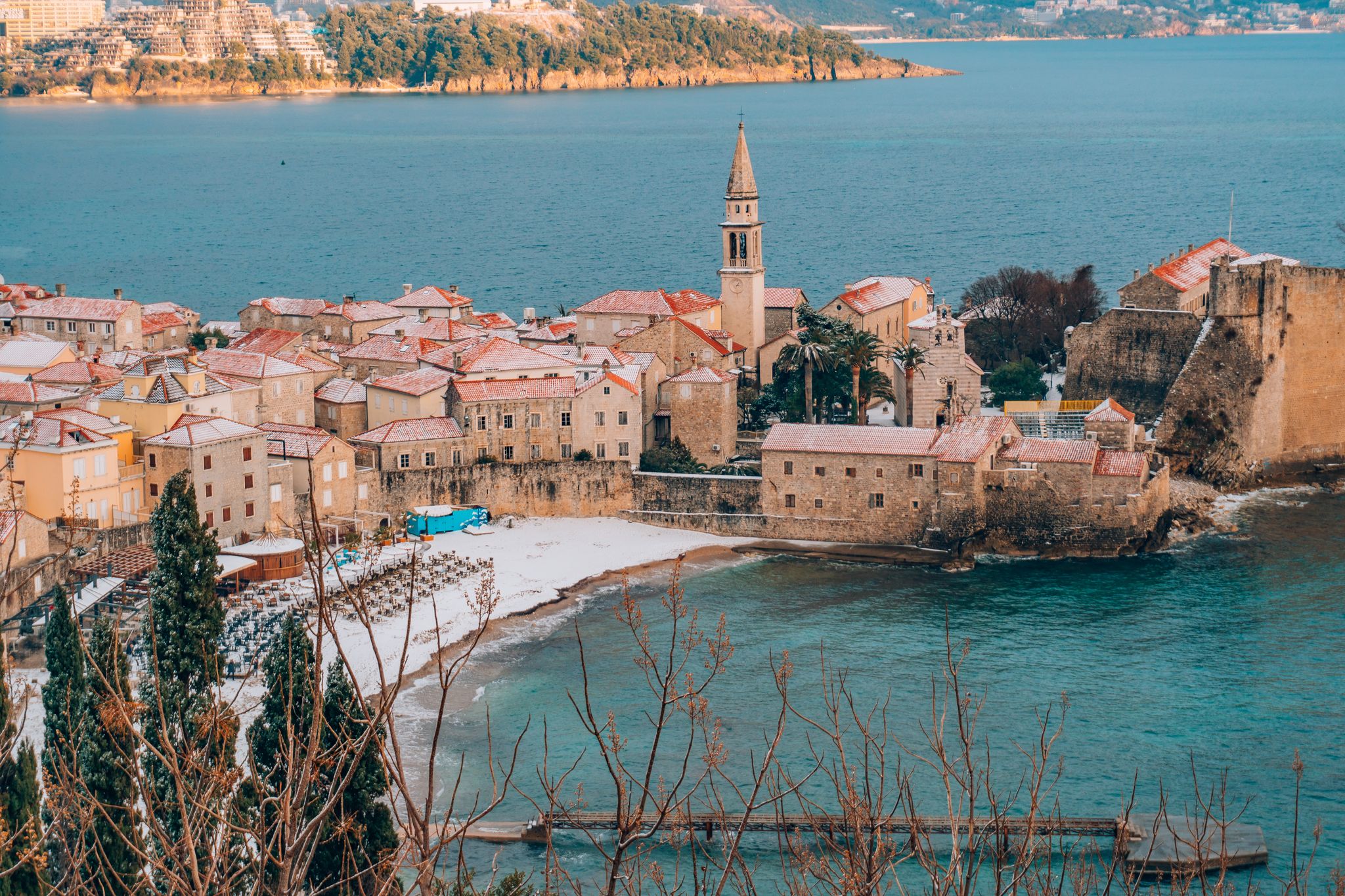
Montenegro's winter off-season offers a unique opportunity to experience the country peacefully. The quieter months of December to February are the best time to visit Montenegro for its tranquil charm.
Top Winter Activities in Montenegro
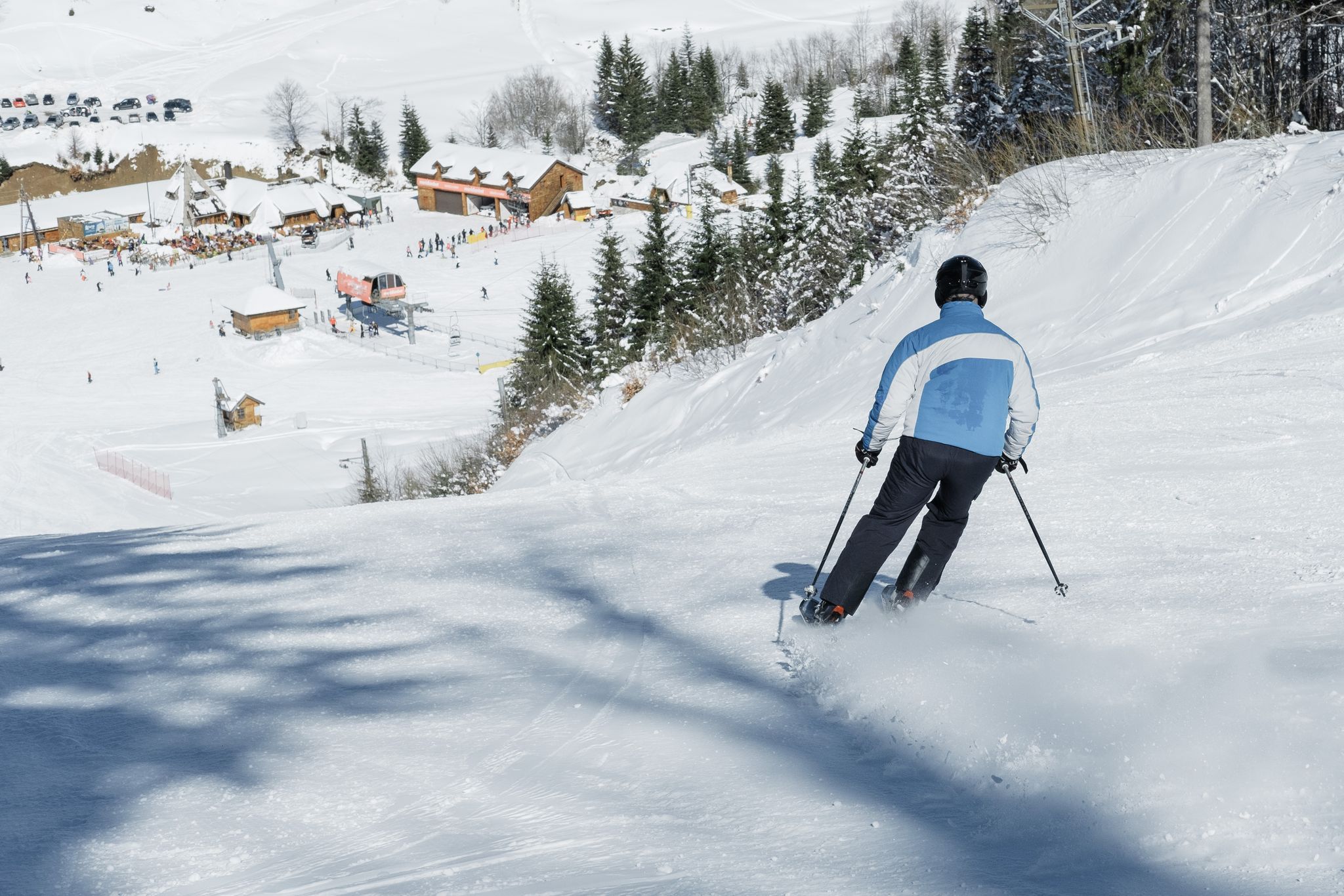
Experience Montenegro’s enchanting side beyond the peak summer crowds. Here are the top activities to enjoy in Montenegro during the off-peak winter season:
1. Go on exciting winter adventures
During the off-season, Montenegro transforms into a snowy wonderland, perfect for thrilling outdoor activities. Head to Durmitor National Park, a UNESCO-listed site, to experience the best of winter sports. Enjoy skiing and snowboarding on well-maintained slopes, try snowshoeing through scenic trails, or go ice climbing for an adrenaline rush.
2. Experience local festivals and traditions
From December to April, Montenegro bursts with cultural festivities. New Year's Eve lights up cities like Podgorica and coastal gems like Budva and Kotor with fireworks and live music. Christmas markets in December offer local crafts and treats. February's International Carnival in Kotor fills streets with colorful parades and masked performers.
The off-season is the best time to visit Montenegro to witness authentic rituals and performances that showcase the country's rich heritage. Film lovers gather for the Montenegro Film Festival in late winter or early spring. April's Petrovdan celebration honors tradition with religious services, processions, and music.
3. Relax in thermal spas
Escape the cold weather by indulging in relaxation and wellness at Montenegro's thermal spas. Soak in rejuvenating thermal waters, unwind with spa treatments, and enjoy panoramic views of the mountains or coastline.
4. Visit Montenegrin cities and towns
Explore Montenegro's charming towns and historic sites without the summer crowds during the off-season. Wander through the narrow streets of Budva's Old Town or admire Perast's Venetian architecture. You can also stroll along the lit-up streets on a magical Christmas tour in Kotor or enjoy a peaceful Christmas walking activity in Podgorica.
5. Photograph snowy landscapes
Capture the beauty of Montenegro's winter landscapes through photography. The off-season is the best time to visit Montenegro to capture atmospheric images of nature's quiet beauty, from snow-dusted mountains to misty lakeshores.
6. Cozy up in mountain retreats
To many, the off-season is the best time to visit Montenegro for a romantic getaway or a peaceful retreat. It’s the perfect opportunity to recharge and reconnect with nature.
Escape to cozy mountain retreats and rural guesthouses in Montenegro's alpine villages. Experience warm hospitality, home-cooked meals, and crackling fireside chats amidst snow-covered peaks and forests.
Advantages of Visiting Montenegro in Winter
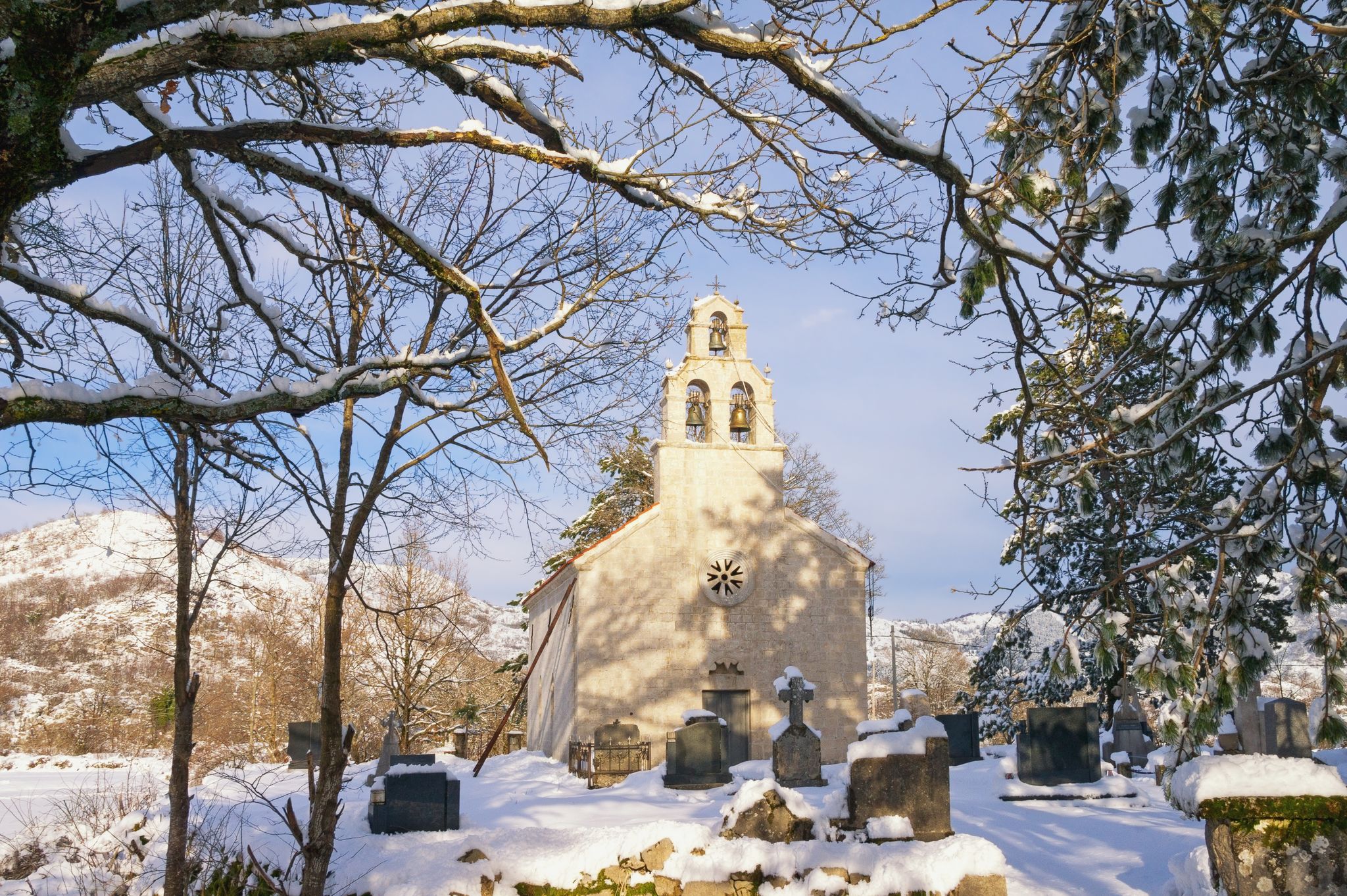
Montenegro, in winter, is a unique and enchanting destination. Here are the advantages of traveling to this beautiful country during the cold months:
1. Serene atmosphere
Experience Montenegro's serene beauty without the crowds during the off-season. Enjoy quiet streets, uncrowded attractions, and peaceful moments in nature as you explore the country at your own pace.
2. More affordable accommodations and tours
During the off-season, accommodations, activities, and tours in Montenegro can be availed at lower prices. Score great deals on the best hotels and places to stay in Montenegro, allowing you to stretch your budget further and indulge in more experiences.
3. Winter wonderland
If you want to experience a picturesque winter wonderland, winter is the best time to visit Montenegro. Discover Montenegro's snowy landscapes and cozy villages during the off-season. Explore snow-capped mountains, pristine forests, and charming towns blanketed in white.
Downsides of Visiting Montenegro in Winter
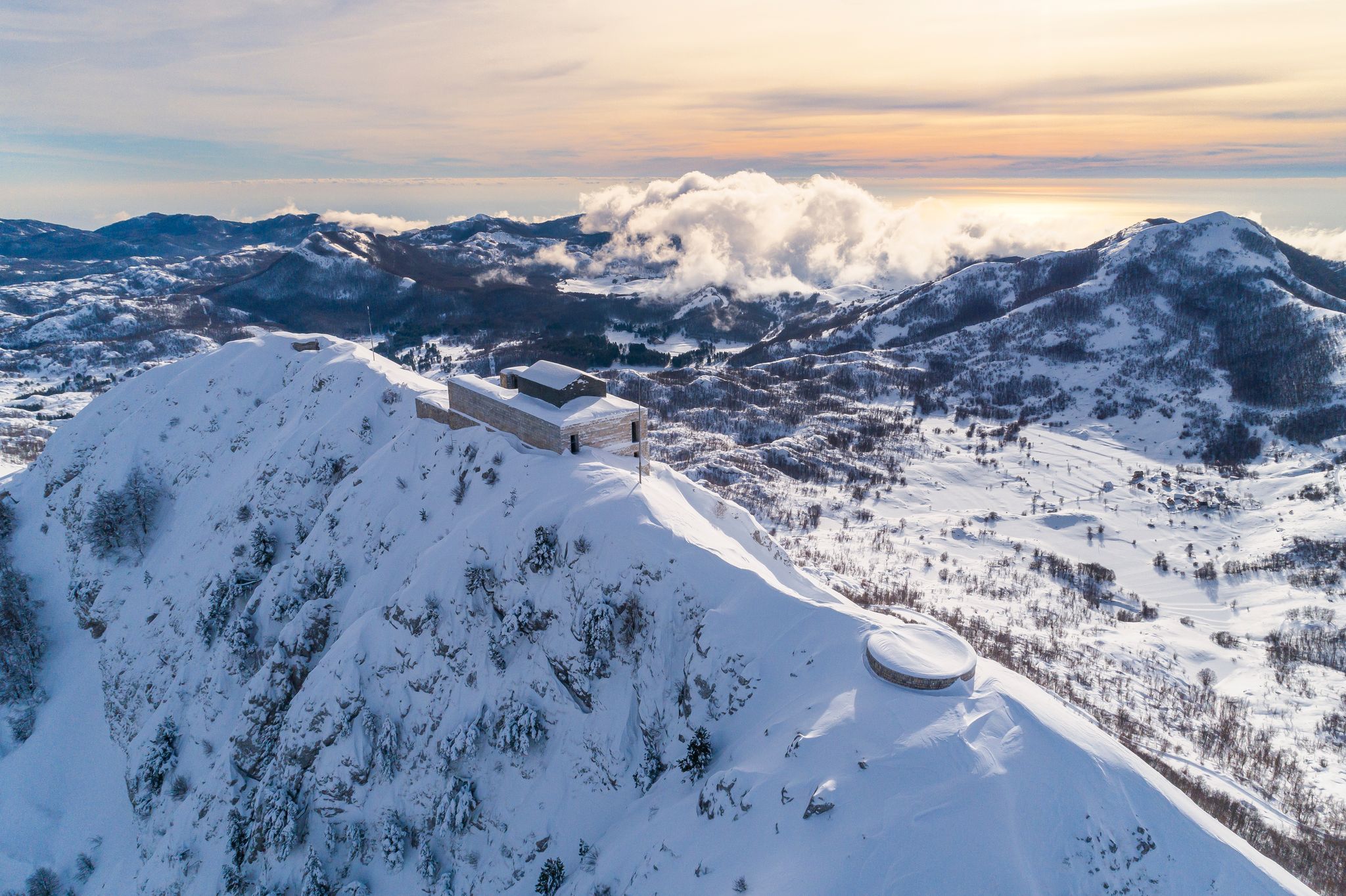
Exploring Montenegro in winter has its drawbacks that you should consider when planning a winter trip to Montenegro:
1. Cold and potentially wet weather
The colder temperatures and snowfall can limit outdoor activities and make travel conditions challenging. Be prepared for cold temperatures and occasional rain or snowfall during the off-season. Dress warmly in layers and waterproof clothing to stay comfortable while exploring.
2. Limited availability of amenities
Expect reduced availability of amenities such as restaurants, shops, and attractions in Montenegro. Coastal areas, known for their summer appeal, can be less lively and appealing in the winter months. Some businesses may have shortened or closed hours, so plan accordingly before your Montenegro trip.
3. Fewer flights and transportation options
Expect limited transportation options during the off-season in Montenegro. Check the schedule of your Montenegro flights in advance so you can consider your transportation options. Know the city’s bus schedules, or look for car rentals in Montenegro for convenience. Being flexible with your travel dates and other modes of transportation is also advised.
When To Visit Montenegro for Beach Time and Water Sports
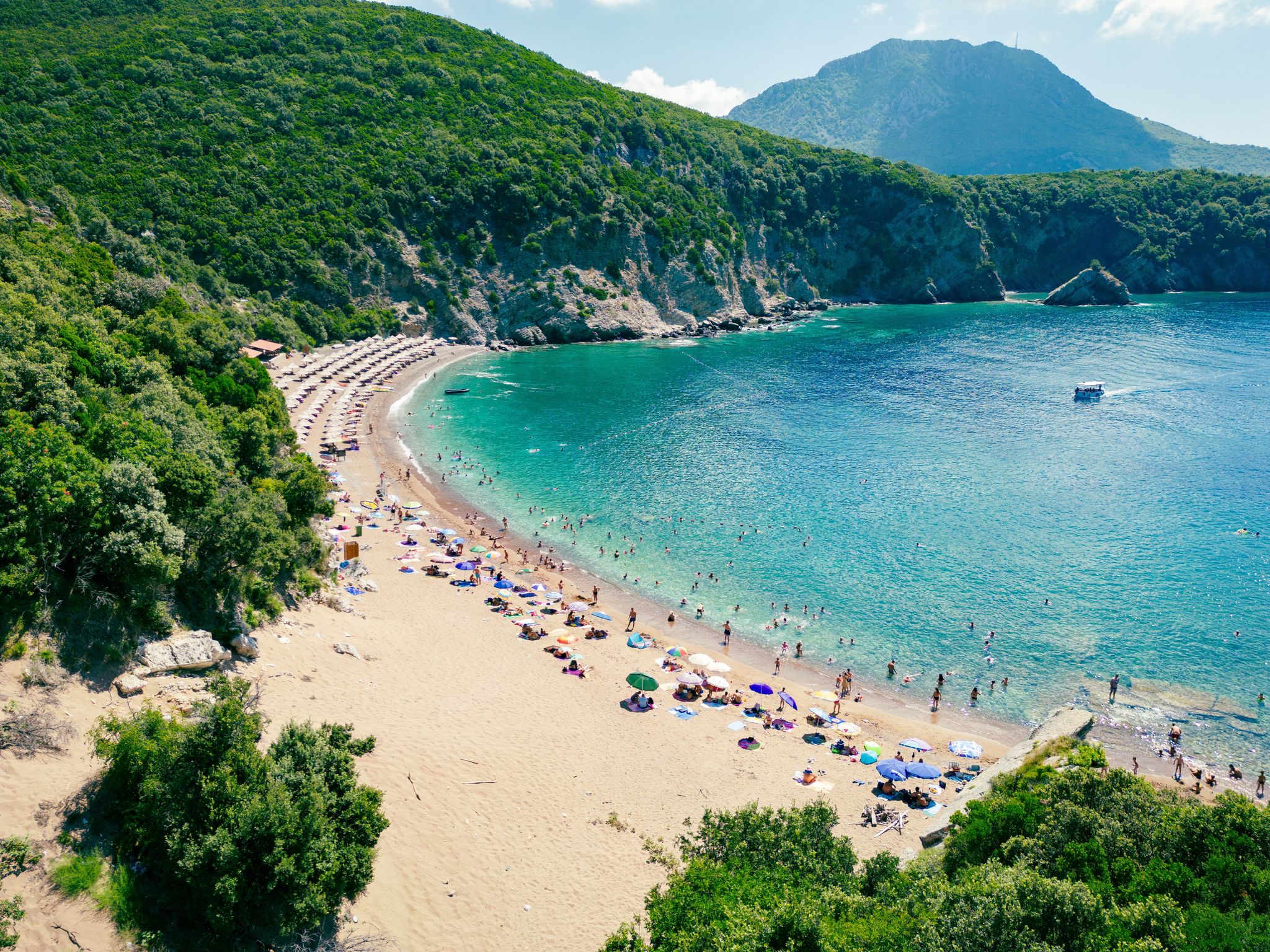
June to August are the best months to visit Montenegro for beachgoers. Summer’s warm temperatures are perfect for swimming, sunbathing, and exploring the coastline. The summer months also provide optimal conditions for enjoying water activities in Montenegro amid stunning coastal scenery.
Best Places To Visit in Montenegro for Sun and Water Activities
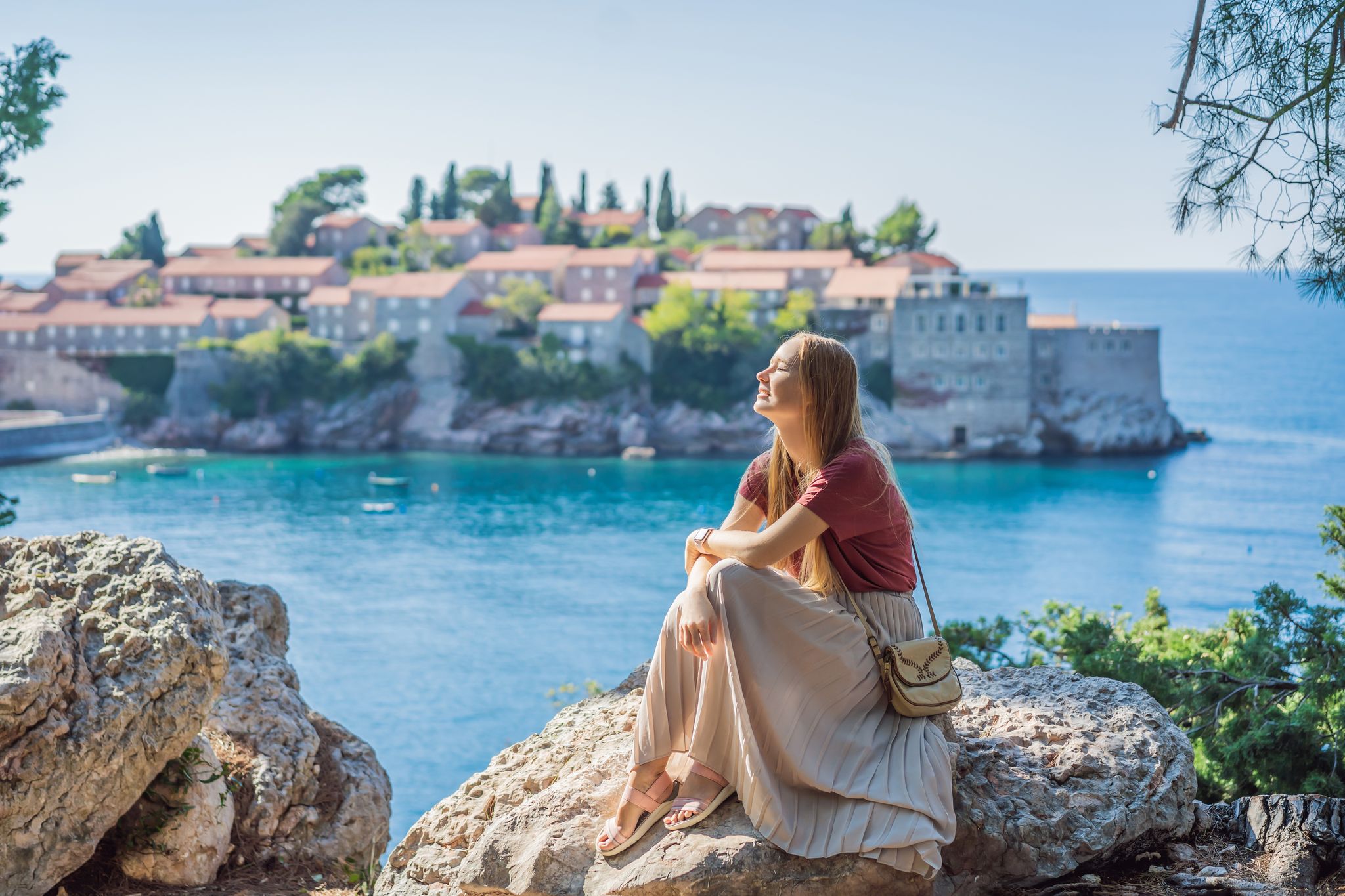
Montenegro boasts a stunning coastline along the Adriatic Sea, dotted with picturesque beaches and offering various water sports activities. Here are some of the best places to visit in Montenegro for sun and water activities:
1. Budva Riviera
Known for its lively nightlife and beautiful beaches, Budva is one of Montenegro's top beach destinations. Famous beaches like Mogren Beach, Jaz Beach, and Slovenska Plaza offer crystal-clear waters and sandy shores. They’re also perfect for swimming, sunbathing, and water sports. Beach vacations in Budva also offer a lively atmosphere with the city’s bustling nightlife scene and beachfront cafes.
2. Kotor Bay
With its dramatic scenery, Kotor Bay offers secluded coves and tranquil beaches ideal for relaxation and water sports. Summer is the best time to visit Montenegro’s beaches, like Plavi Horizonti and Dobrota Beach, for swimming and sunbathing.
Kayaking, sailing, and taking a Montenegro boat tour to discover hidden coves, sea caves, and historic sites are also popular activities during the summer months.
3. Sveti Stefan
This iconic island resort features a stunning pink sand beach surrounded by turquoise waters. Relax in luxury at one of Sveti Stefan's exclusive beach clubs, or indulge in water sports like kayaking and paddleboarding. You can also embark on an immersive tour of Sveti Stefan, Budva, and Kotor and witness their charm.
4. Herceg Novi
Summer is the best time to visit Montenegro for charming beach vacations in Herceg Novi. Explore this charming coastal town and its surrounding beaches, including Zanjice Beach and Mirista Beach in the nearby Lustica Peninsula. Experience the city’s pristine beaches, ideal for swimming, snorkeling, and exploring underwater.
5. Blue Cave
The Blue Cave is a natural wonder known for its mesmerizing blue hues from sunlight reflecting off the underwater limestone walls. Visitors can take sailing tours in Montenegro, explore the cave's interior, and admire the pristine waters and otherworldly vibe inside. Snorkeling and swimming in the clear waters around the cave are also popular activities.
6. Our Lady of the Rocks
Situated near the town of Perast, Our Lady of the Rocks is a man-made islet with a picturesque church and museum. You can take boat tours to the islet, explore the church and museum, and enjoy panoramic views of the bay and surrounding mountains.
Best Time To Visit Montenegro for Outdoor Activities and Hiking
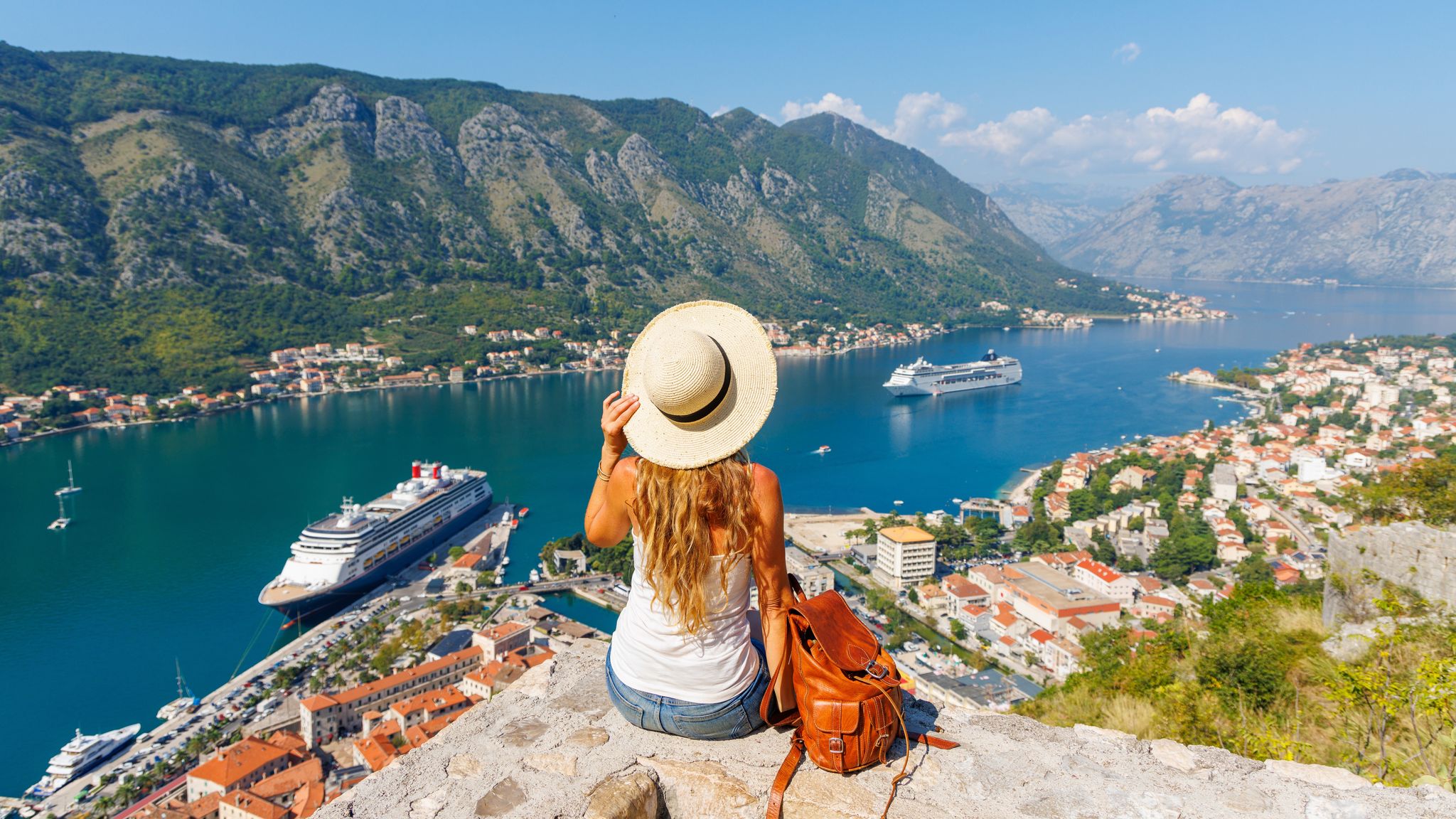
Hiking and nature enthusiasts will find the shoulder season the best time to visit Montenegro for outdoor activities. The months of May to early June and September to October offer cooler temperatures and less crowded trails. Visitors can explore Montenegro's scenic landscapes, including Durmitor National Park and Biogradska Gora National Park, without the summer heat or winter snow.
Best Places To Visit in Montenegro for Hiking and Other Outdoor Activities
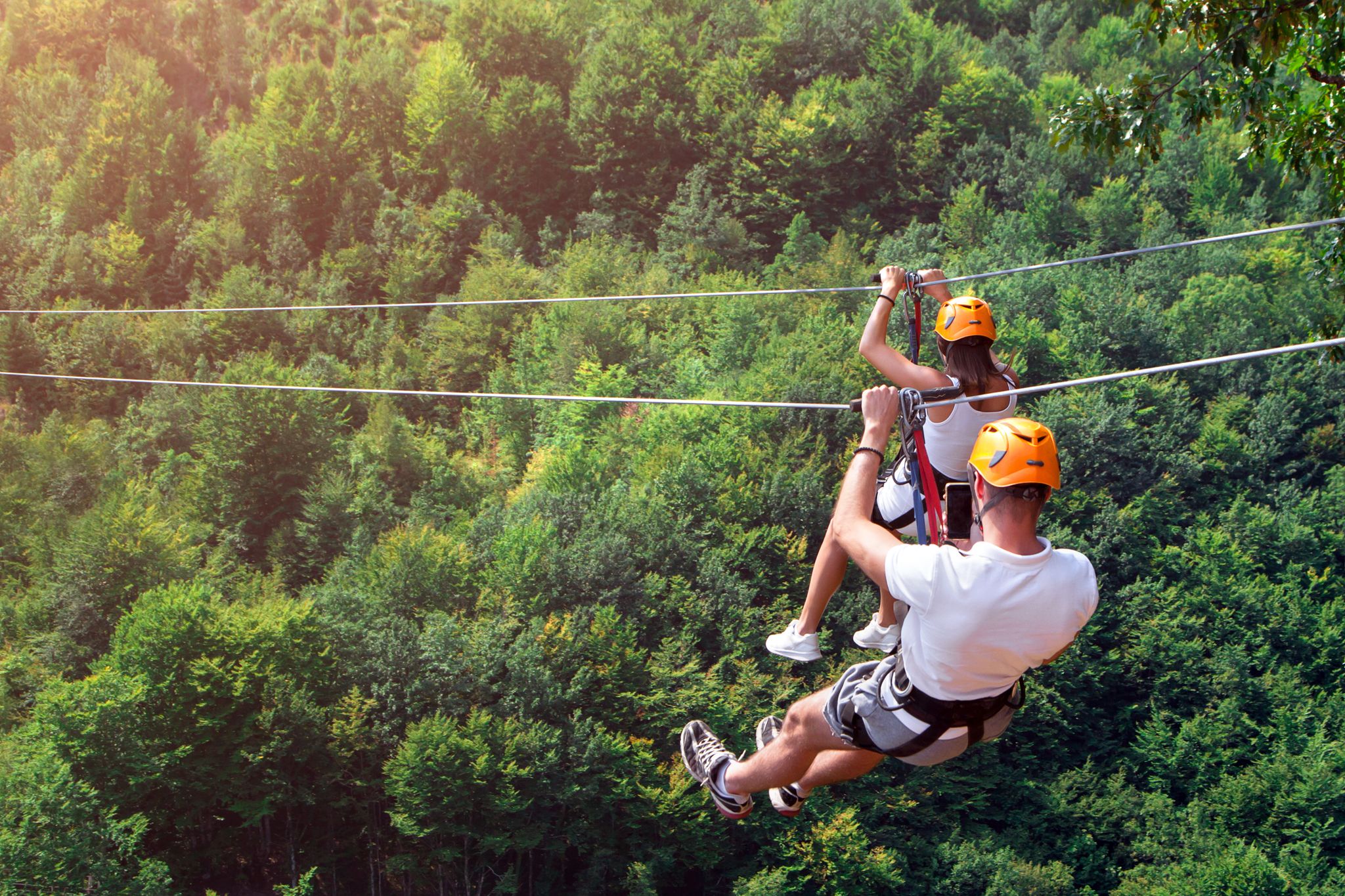
Montenegro's rugged terrain and diverse landscapes make it a paradise for outdoor enthusiasts. This feature ensures many hiking trails and other action-packed experiences for adventure seekers. Here are some of the best places to visit in Montenegro for outdoor pursuits:
1. Durmitor National Park
Durmitor National Park is a UNESCO World Heritage Site situated in the northwestern part of Montenegro. It’s renowned for its dramatic limestone peaks, glacial lakes, and dense forests.
Hikers can explore a network of trails, including the challenging ascent to Bobotov Kuk, the highest peak in Montenegro. Other outdoor activities in Durmitor include mountain biking, whitewater rafting on the Tara River, and zip-lining through the Tara Canyon.
2. Biogradska Gora National Park
Biogradska Gora National Park is known for its ancient virgin forest, pristine glacial lake, and diverse wildlife. Hikers can enjoy trails ranging from strolls around Biogradsko Lake to more challenging treks to peaks like Cekanje and Volujak. The park also offers birdwatching, canoeing, and fishing opportunities in its tranquil surroundings.
3. Lustica Peninsula
This scenic peninsula on Montenegro's Adriatic coast offers a retreat for outdoor enthusiasts. April to May and September to October are the best months to visit Montenegro to explore the peninsula’s trails that wind through olive groves, rocky cliffs, and hidden coves. You can also enjoy sea kayaking, snorkeling, and boat tours along pristine coastlines and underwater caves.
4. Skadar Lake National Park
Skadar Lake National Park is the largest lake in the Balkans. This park is famous for its diverse birdlife, wetland habitats, and cultural heritage.
Visitors can hike along the lake shores, explore picturesque villages, and visit historic monasteries like Kom Monastery and Starcevo Monastery. The park also offers opportunities for birdwatching, boat tours, and kayaking adventures.
Ideal Season to Experience Montenegro's Culture and History
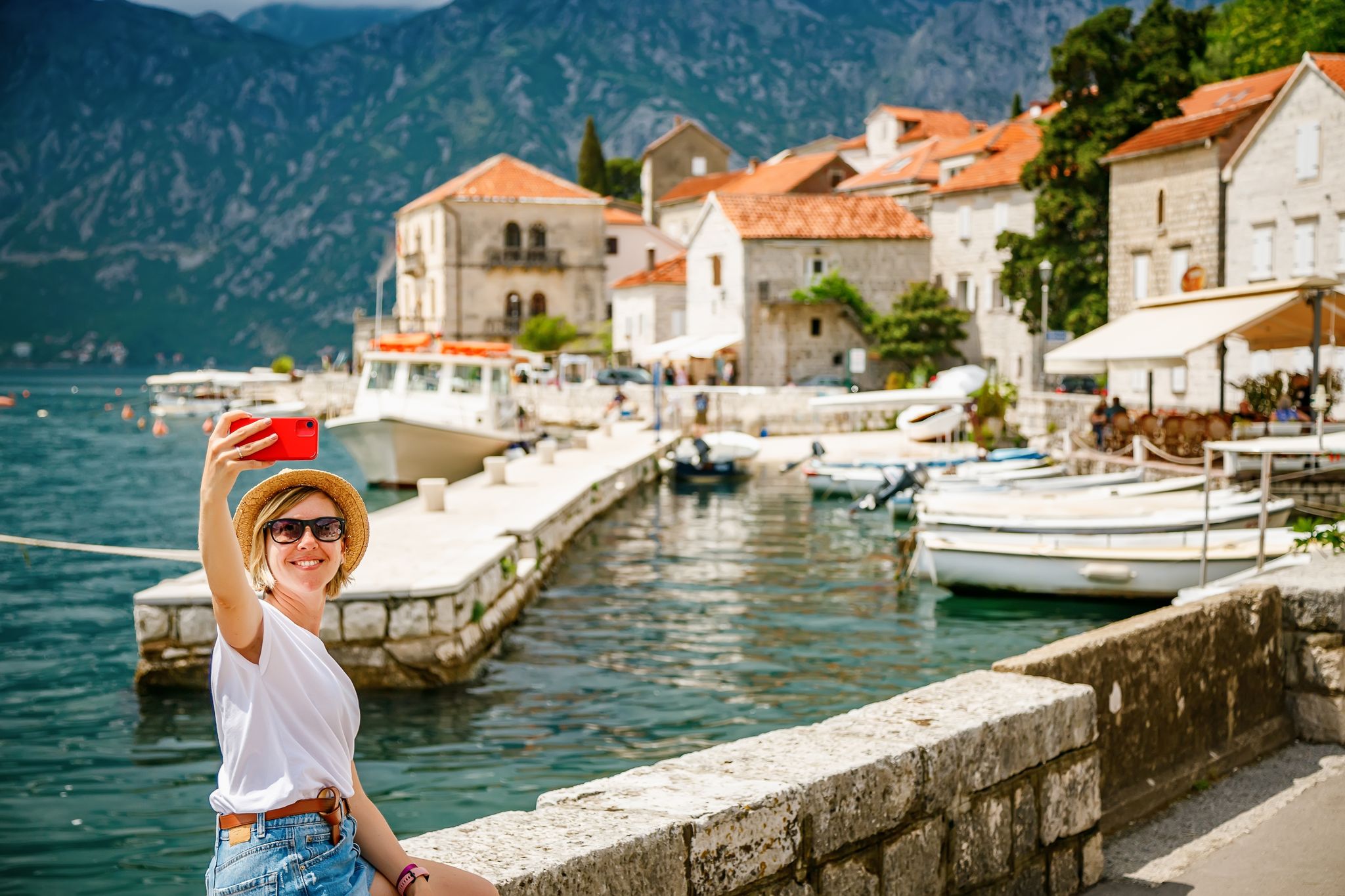
Visitors can enjoy Montenegro's rich cultural heritage and historical sites year-round. While any season is suitable for cultural exploration, the best time to visit Montenegro is during the shoulder seasons. The comfortable weather of spring and autumn is ideal for wandering through old towns, visiting medieval monasteries, or attending festivals.
Best Places To Visit in Montenegro for Its Culture and History
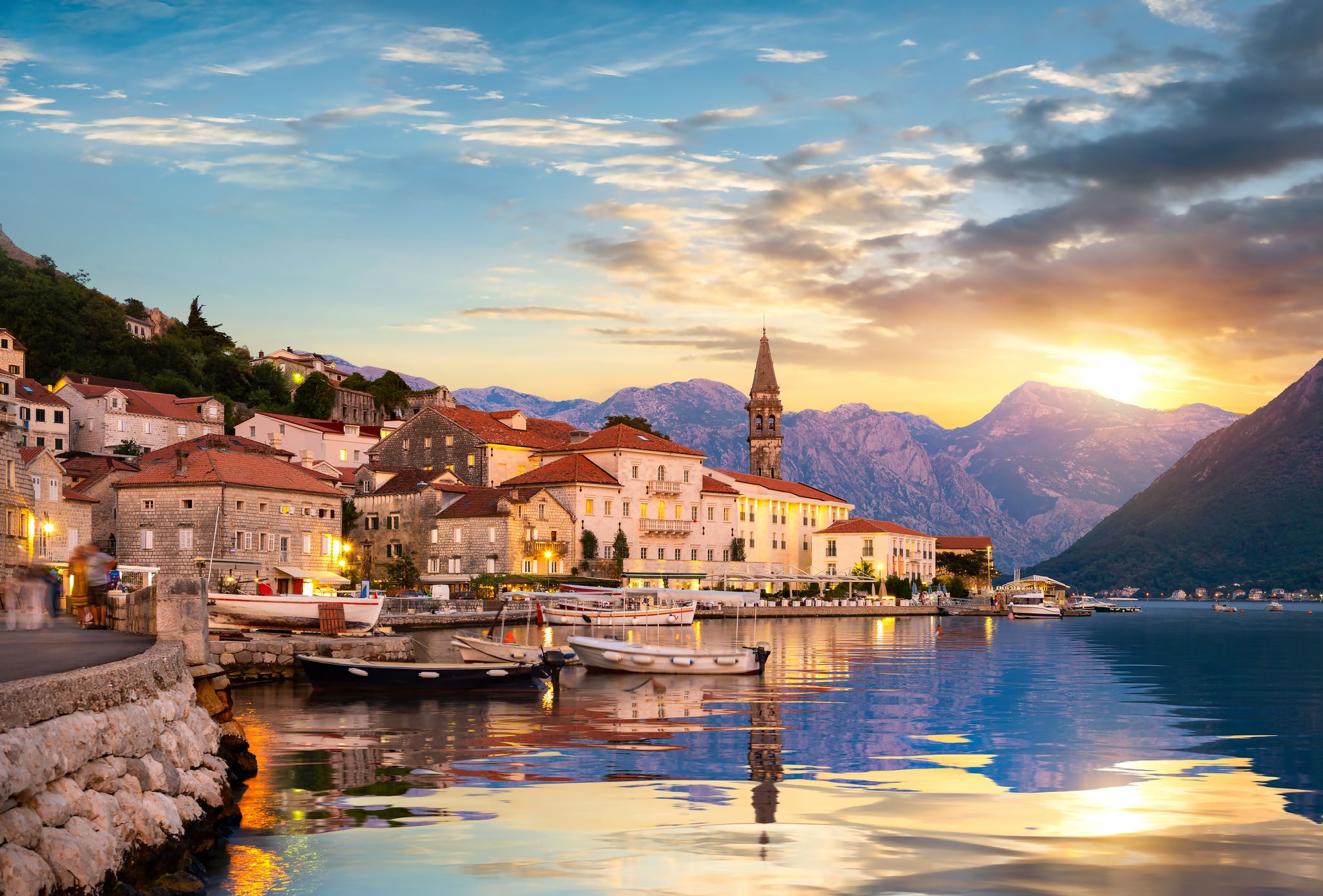
A treasure trove of culture and history, Montenegro boasts plenty of ancient towns, lively festivals, and medieval monasteries. These destinations promise a fascinating journey through the country’s storied past, rich traditions, and lively festival scene.
1. Kotor
This UNESCO-listed gem is famed for its well-preserved medieval old town. Some of the highlights include the Cathedral of Saint Tryphon and the Maritime Museum.
Join cultural tours in Kotor and stroll along winding cobblestone streets, visit historic churches, and admire imposing city walls while learning about the past. During summer, Kotor hosts the Kotor Festival of Theatre for Children, offering a delightful cultural experience for families.
2. Budva
Budva's old town is a maze of narrow streets lined with centuries-old buildings, churches, and squares. Travelers can explore landmarks like the Church of Saint John all year round. In summer, lively festivals like the Budva City Theatre Festival are the highlight.
3. Cetinje
At Cetinje, explore museums like the National Museum of Montenegro, which houses a rich collection of artifacts at any time of the year. You can also visit the Cetinje Monastery, founded in the 15th century.
For a lively experience, the best time to visit Montenegro is during summer, in time for the Cetinje Cultural Summer. Some of the experiences you can enjoy during this season include concerts, exhibitions, and theater performances.
4. Ostrog Monastery
Carved into a cliffside, this iconic Orthodox monastery is one of Montenegro's most revered pilgrimage sites. Ostrog Monastery offers breathtaking views and a peaceful atmosphere. You can also participate in religious festivals held at the monastery, such as the Feast of St. Basil the Great in January and the Feast of the Presentation of the Lord in February.
5. Herceg Novi
Herceg Novi is a cultural delight known for its blend of Venetian, Ottoman, and Austro-Hungarian architecture. Wander through the old town's narrow streets, visit historic churches like the Savina Monastery, or catch one of the year's many cultural events and festivals.
If you want to join the Mimosa Festival in Herceg Novi, the best time to visit Montenegro is February. The festival celebrates the arrival of spring with colorful parades, concerts, and exhibitions.
6. Perast
This charming coastal town is home to plenty of Baroque architecture and medieval history. Explore landmarks like Our Lady of the Rocks, a man-made island with a stunning church and museum, and soak in the town's maritime heritage. Perast also hosts the Perast Cultural Summer, featuring classical music concerts, art exhibitions, and traditional performances.
Best Months To Visit Montenegro for Winter Sports and Skiing
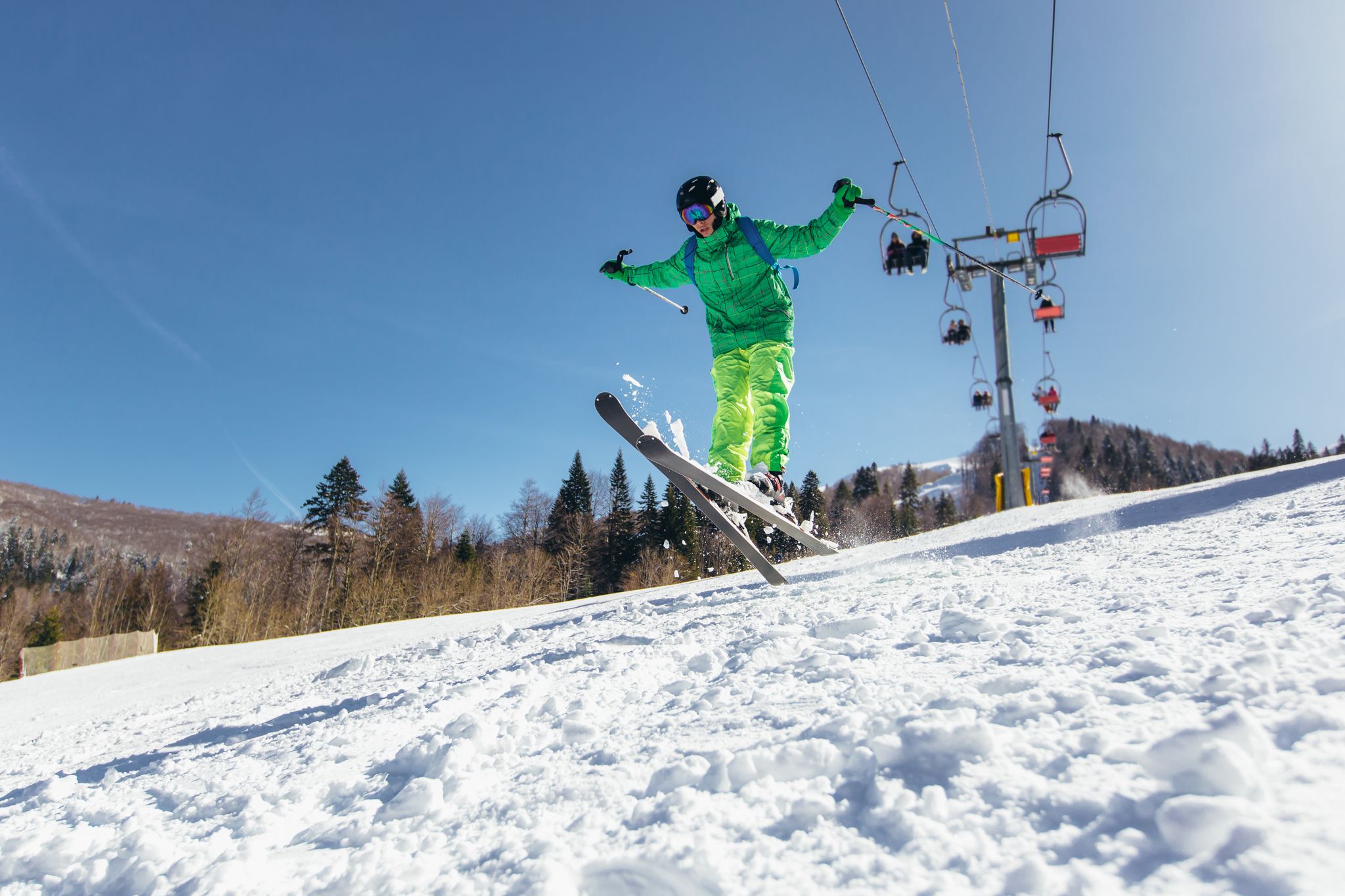
For winter sports enthusiasts, the best months to visit Montenegro are December, January, and February. Snow-covered mountains and ski resorts like Kolasin and Zabljak offer excellent conditions for skiing and snowboarding. With well-groomed slopes and stunning alpine scenery, Montenegro's ski resorts provide an unforgettable winter sports experience.
Best Places To Visit in Montenegro for Winter Sports and Activities
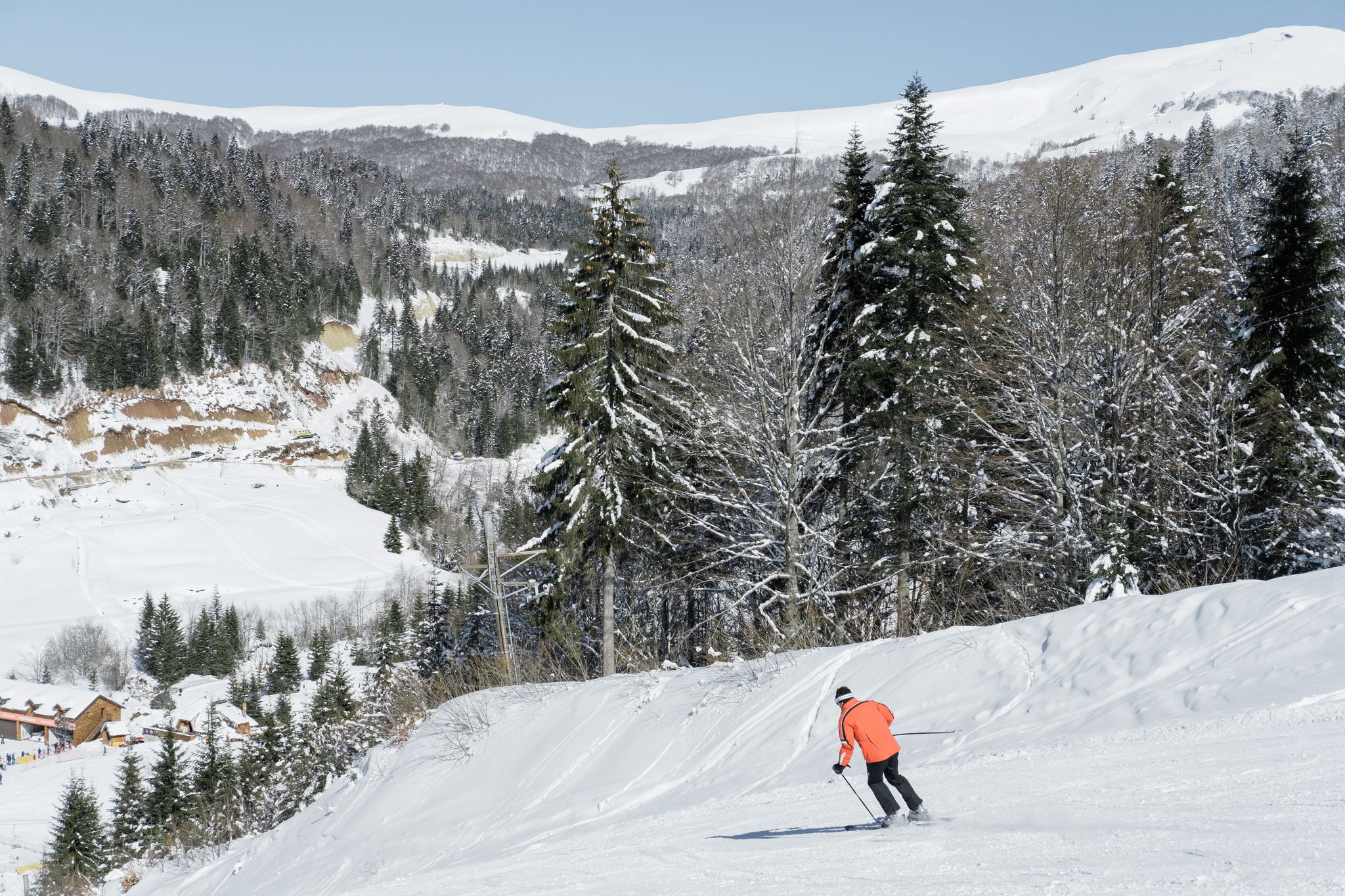
Montenegro offers various winter sports and activities, from skiing and snowboarding to snowshoeing and ice skating. Here are some top places to visit for winter fun:
1. Kolasin
Kolasin is a popular winter destination for its excellent skiing and snowboarding opportunities. The Kolasin 1450 ski resort offers well-groomed slopes suitable for all levels. It also has ski schools, equipment rental, and cozy mountain lodges.
2. Durmitor National Park
Home to the stunning Durmitor mountain range, this national park transforms into a winter wonderland during the colder months. December to February is the best time to visit Montenegro to enjoy winter activities like cross-country skiing, snowshoeing, and snowmobiling. The nearby town of Zabljak serves as a gateway to the park and offers accommodations and dining options.
3. Bjelasica Mountain
Located near Kolasin, Bjelasica Mountain is another fantastic destination for winter sports enthusiasts. Its varied terrain caters to skiers and snowboarders of all skill levels. Meanwhile, the lack of crowds ensures a more intimate experience on the slopes. Bjelasica is also an excellent spot for snowshoeing and hiking in the snow-covered landscapes.
4. Biogradska Gora National Park
While primarily known for its lush forests and pristine lakes, Biogradska Gora National Park also offers winter activities such as cross-country skiing and snowshoeing. Meanwhile, the tranquil surroundings and diverse wildlife make it a perfect escape for nature lovers seeking a winter adventure.
5. Icy Lakes of Zabljak
During the winter months, the lakes near the town of Zabljak freeze over. This creates a unique opportunity for ice skating and ice fishing. You can enjoy gliding across the frozen surfaces surrounded by snow-capped mountains and pristine nature.
So, When is the Best Time To Visit Montenegro?
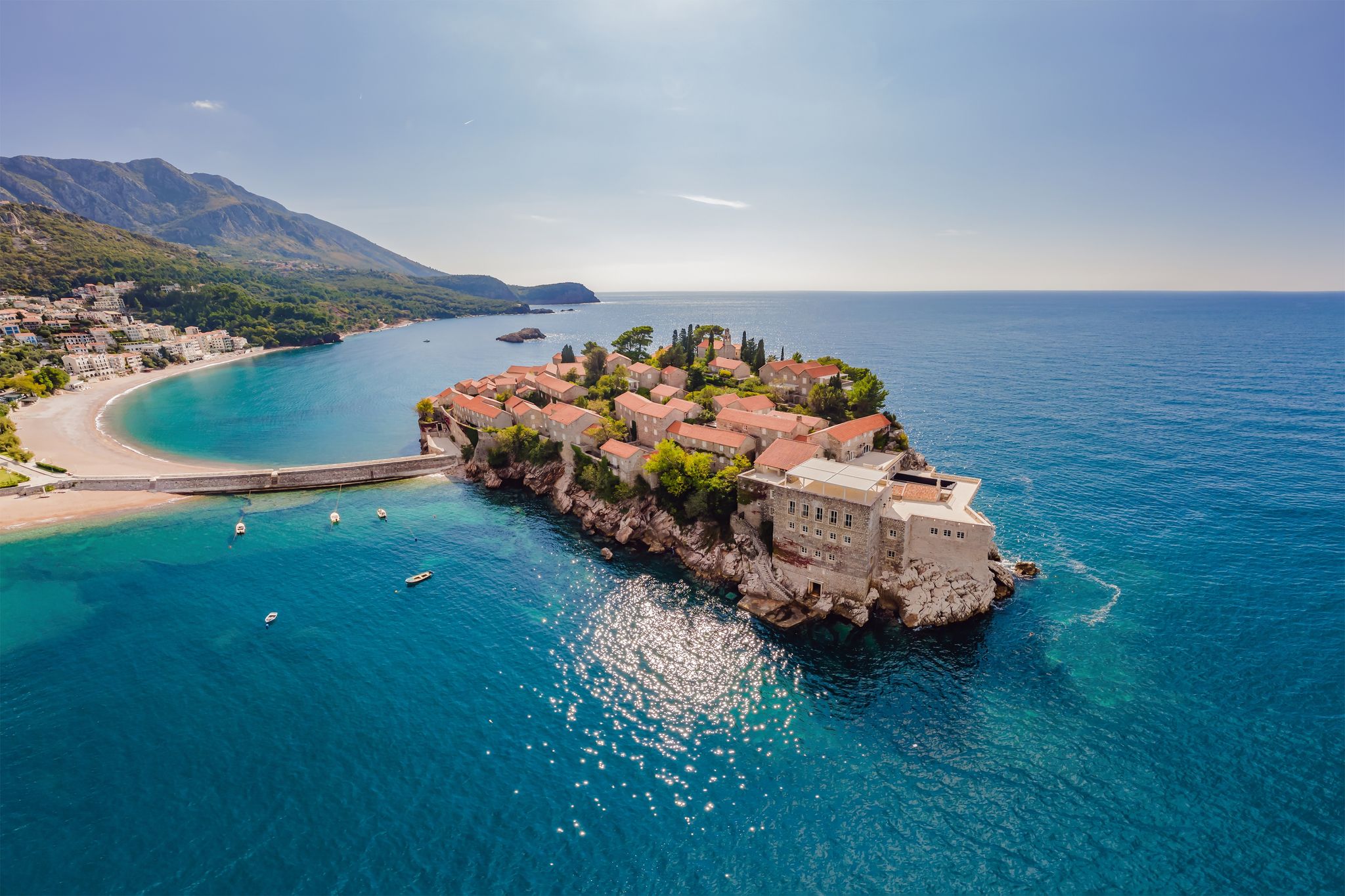
Deciding the best time to visit Montenegro depends on your priorities and what you want to experience. With the best holiday packages in Montenegro, you can easily tailor your trip to match your interests, whether it's beach days, mountain hikes, or cultural explorations.
In conclusion, here are some points to consider to help you decide on the best time to visit Montenegro:
- For sunseekers and beach lovers, the summer months of June to August are ideal. Summer offers warm temperatures and clear skies, though it can be pricier and busier.
- If you prefer a quieter atmosphere with mild weather, spring (March to May) and autumn (September to November) are perfect. These months see fewer crowds and lovely conditions for outdoor activities in Montenegro. Remember that spring and autumn may bring occasional rainfall, so pack accordingly.
- Montenegro in winter (December to February) is perfect for those who enjoy winter sports, with resorts like Kolasin and Zabljak offering excellent skiing and snowboarding opportunities. The winter months also provide a unique charm with snow-capped mountains and festive holiday events.
- For those traveling with family or on a budget, spring (April to May) and early autumn (September to October) provide mild weather, fewer crowds, and potentially lower prices. These seasons also offer a more relaxed atmosphere, perfect for enjoying amazing experiences in Montenegro and ideal for those with kids or the elderly.
Understanding these factors can help you choose the best time to visit Montenegro based on your specific needs and preferences. Each season in Montenegro has its own unique appeal, ensuring a memorable trip no matter when you choose to visit.
Start planning your adventure today with the best flights to Montenegro and create unforgettable memories!
FAQs About the Best Time To Visit Montenegro
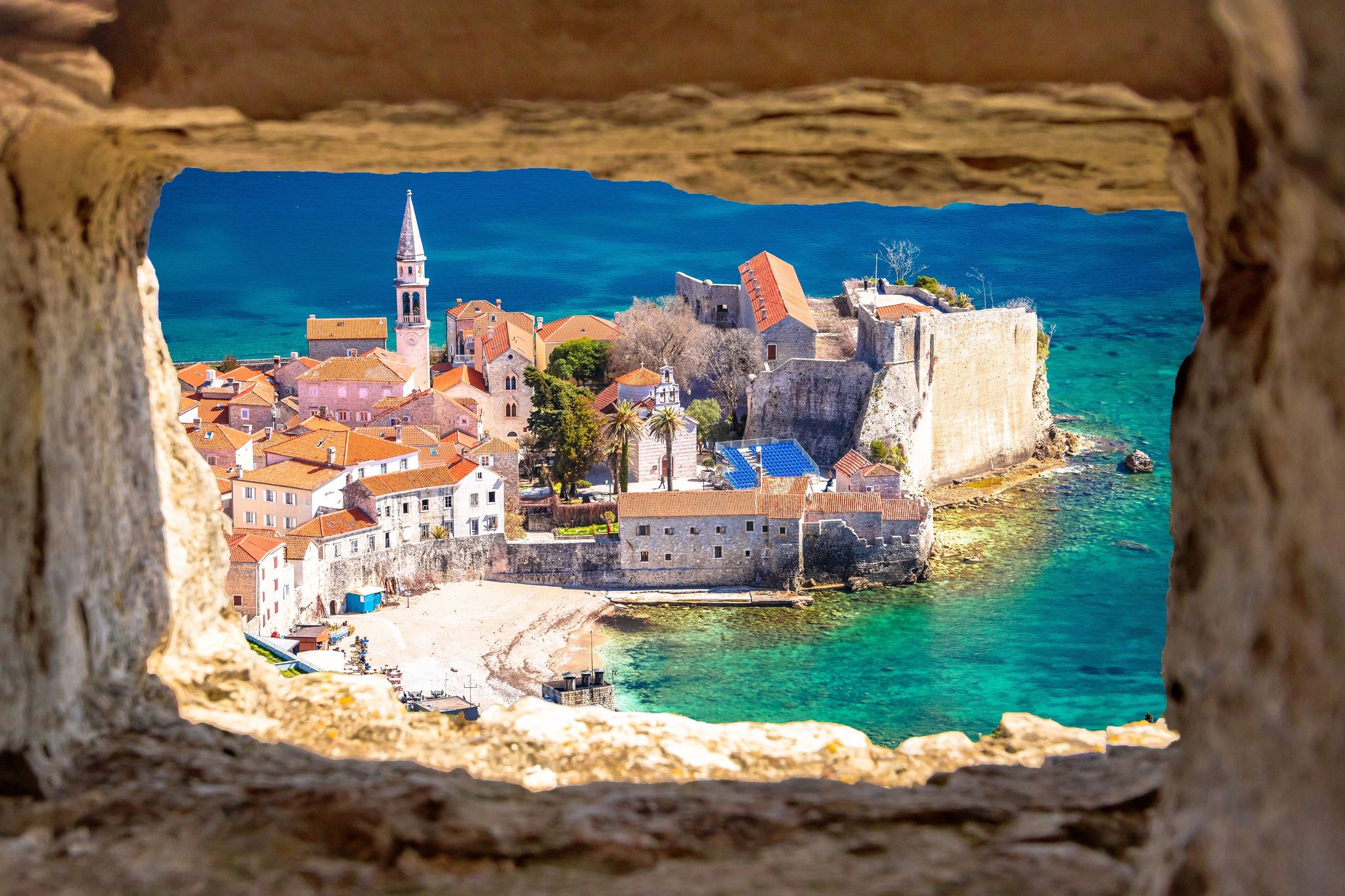
What is the peak travel season in Montenegro?
The peak travel season in Montenegro is during the summer months, especially July and August. Montenegro in summer is warm, with coastal towns and beaches bustling with visitors. Accommodation prices are higher during this time, and popular attractions can be crowded.
What is the best time to visit Montenegro for outdoor activities?
The best time for outdoor activities in Montenegro depends on your interests. Spring and early autumn offer comfortable temperatures and blooming landscapes for hiking and exploring national parks. Winter is ideal for skiing and snowboarding in destinations like Kolasin and Durmitor National Park. Summer is the best time to visit Montenegro for water activities and beach hopping.
What are the best months to visit Montenegro for good weather?
The best weather in Montenegro typically falls in summer, from June to August. During this time, you can expect warm temperatures, clear skies, and plenty of sunshine. The long, sunny days provide plenty of opportunities for hiking, swimming, and sightseeing.
However, spring (April to May) and early autumn (September to October) also offer comfortable weather with fewer crowds. Keep in mind, though, that rainfall is more likely in spring and autumn, so it’s wise to pack accordingly. Despite the occasional showers, the shoulder seasons are also ideal for exploring stunning landscapes and cultural sites without the summer crowds.
What is the best time to visit Montenegro for cultural festivals and events?
Montenegro hosts cultural festivals and events throughout the year, and the best time to visit depends on your preference. The summer months are typically bustling with music festivals, art exhibitions, and traditional celebrations. Meanwhile, winter brings holiday markets and events. In spring and autumn, a variety of cultural and religious festivals await.
What is the cheapest month to visit Montenegro?
The most budget-friendly months to visit Montenegro are typically January, October, or November. In January, the winter off-season means fewer visitors, leading to lower prices for accommodations and flights. It’s also cold, wet, and windy, which isn't great for sightseeing. However, it's the perfect time for enjoying winter sports without the crowds.
October and November, on the other hand, mark the end of the travel season in Montenegro. These months often provide reduced rates on accommodations and flights, making it the best time to visit Montenegro for budget travelers.
What is the weather like in Montenegro during the shoulder seasons?
Spring and autumn shoulder seasons offer mild temperatures, fewer crowds, and lower accommodation prices compared to the peak summer months. Spring or autumn is the best time to visit Montenegro to explore the country’s natural beauty and cultural attractions without the summer crowds.
What is the weather like in Montenegro during the winter months?
Winter in Montenegro varies depending on the region. Coastal areas experience milder temperatures, while mountainous regions can get quite cold with snowfall, making them ideal for winter sports. Inland cities like Podgorica and Cetinje may have chilly temperatures but are generally milder than the mountains.
Is Montenegro suitable for a winter holiday?
Absolutely! Montenegro offers plenty of opportunities for a winter holiday, especially in its mountainous regions. Destinations like Kolasin and Durmitor National Park are popular for skiing, snowboarding, and other winter sports. The country's charming towns and cultural sites also provide a cozy atmosphere during the colder months.
Is it possible to visit Montenegro's national parks year-round?
Certainly! Montenegro's national parks, including Durmitor, Biogradska Gora, and Lovcen, are accessible year-round. Each of these parks offers unique experiences depending on the season. While summer is typically the best time to visit Montenegro for hiking and camping, winter provides opportunities for snow sports and enjoying the pristine winter landscapes.
When is the best time to book a Montenegro travel package?
Book at least six months in advance for a Montenegro travel package that’s scheduled during the peak summer season. Meanwhile, for off-peak seasons, it’s advisable to book at least three months before your trip. Booking early often results in better deals and availability for accommodations, transportation, and activities. However, last-minute deals may also be available during the off-peak seasons.
